WARNING: This post requires high amount of bandwidth! Wi-Fi connection advised.
Hello everyone!
After a two-year hiatus from the series of posts on decommisioned schools, I am thrilled to announce my return with part IV featuring schools that were not mentioned in the first three instalments, as well as those impending closure (yes, it’s still happening). Thank you everyone for the overwhelming support once again, especially those who have contributed to this list.
Be sure to check out PART 1, PART 2 and PART 3 if you haven’t!
This post features more schools in Eastern Singapore, most of which are Chinese schools formed by villagers or Chinese clan associations which did not survive past 1981 due to population shift and growing preference towards English-stream schools. Some schools, though already closed, were “revived” when newly-erected schools adopt their Chinese names. Those that are still in existent pulled through because they were pragmatic enough to shift to a satellite town.
* * *
West Hill School (Sembawang)
Closed in early 1985
The primary school was founded in 1957 at the now-defunct Bah Tan Road. As it was built in the 1950s, it did not have modern facilities of the newer schools, thus making it more susceptible to damage. On 4 January 1985, a freak storm which had initially caused tiles and classroom lamps to fall subsequently tore off the school roof during school hours, forcing their students to share classrooms with nearby Canberra School. Thankfully no one was hurt because of the quick thinking of the school’s senior assistant who evacuated everyone occupying the third-floor classrooms to the ground floor before it happened. When the building was rendered unsafe and beyond repair, the then-Education Ministry decided to close the school and transfer their students to neighbouring schools such as Canberra School and Jiemin School in Yishun.


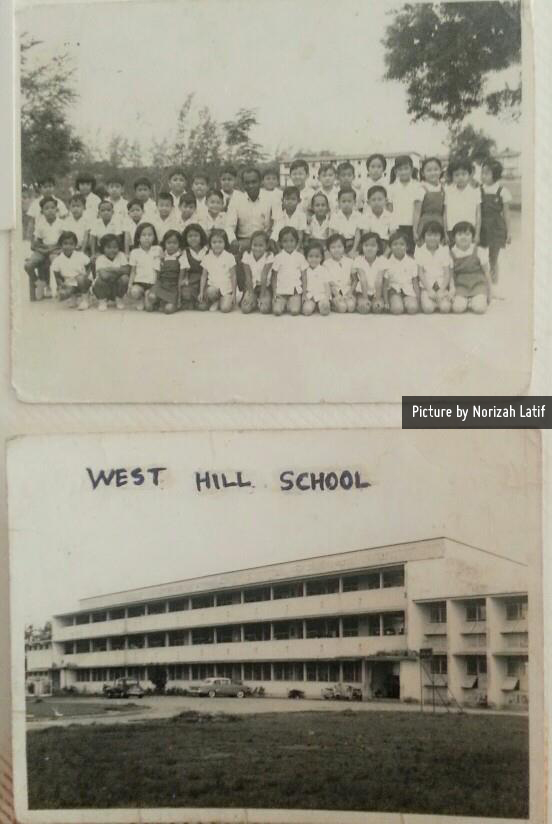
1962

1981

P5, 1985
After the school’s closure, Naval Base Secondary School occupied the land until the construction of Sembawang MRT Station came into the picture.
Nee Soon School (Sembawang)
Closed in 1986
Established in 1954 along Nee Soon Lane in 1954 next to an army training camp (which I suppose would be in a high security and remote zone) and about 6 km away from Nee Soon Police Station, it wasn’t at the most convenient of locations.
It was completed the year before with 16 classrooms to accommodate 600 pupils.

In 1958, the school changed the design of the female school uniform from a two-piece white blouse and grey skirt to a one-piece dark grey dress. This decision caused a bit of an uproar among parents who felt that the thick material used in the new uniform was impractical for the tropical climate in Singapore. However, I noticed the girls in a class photograph taken in the 1960s by George Pereira were dressed in both the old and new uniforms, so perhaps in a bid to appease the unhappy parents the principal eventually allowed both to be worn to school.

Uniform – before (right) and after (1985)
Collecting information about this school is no mean feat as it was known as several names including Nee Soon Primary School and Nee Soon English Primary School. On top of that, it was as if the school had magically vanished because virtually nothing about it can be found on the internet. What presently occupies the land where Nee Soon School once stood is just a flattened field with no development at all. The school never had any chance of revival.
[Update on 15 Oct 2020] A reader has come forward to provide more information on Nee Soon School. According to Mr A. Reeves (who was among the final batch of students in 1986) the school catered mainly to those staying in the Nee Soon kampong or in the Springleaf residence area. There were only a few students in each cohort (presumably during its last few years in existence). With only one or two classes for each level (i.e. 1A, 2A, etc.), no matter how well or poorly students did for their exams, they would always know which class they were going to eventually!
The whole lot of students were then moved to Peixin Primary School (which was, in turn, merged with Yishun Primary School) in the first semester of 1987 after the school closed in end 1986, perhaps, due to the fact that many students from the kampong were relocated to HDBs within Yishun. The school was left vacant for a period of time before it was used as a camp for those who took NCC as an ECA.

1986
There used to be a Facebook page for Nee Soon Primary School but it has since been taken down (probably archived) due to inactivity. The remaining alumni group has only two members with the last updated posted more than three years ago. It would be great if ex-students could gather and revive the page again!
Meng Teck School (Punggol)
Closed in 1985
Established in 1932, Meng Teck School is a Chinese Catholic school at No. 5 Jalan Seranggong Kechil, 9 miles, off Punggol Road. It was situated right beside St. Anne’s Church where students would go over to play after school.

Every year, Meng Teck School would participate in a joint sports meet with three other Catholic schools in the Hougang district, namely Hai Sing Girls’ High School, Holy Innocents’ High School and a CHIJ school.
After Meng Teck School was closed, the remaining students were transferred to Holy Innocents’ Primary School and the building was converted to a church centre. The former site is now occupied by CHIJ St. Joseph’s Convent.
Source: [1] [2] [3] [4] [5] [6] [7]
Ming Sin School (Hougang)
Closed in 1984
Ming Sin School (sometimes misspelled as Min Sin School) was a primary school under the management of Bethal Presbyterian Church after it was acquired in 1950. It was a kampong Chinese school made of attap originally constructed at Bukit Arang Road before the World War II (exact year unknown) where it also served as a shelter during the Japanese occupation.

1967
After the war, the school moved to 53 Wolskel Road, off Upper Serangoon Road, upon recommendation of the school’s board of directors formed by the locals. Completed in 1959, the 4-storey building had 24 classrooms and a tuck shop. The school was also home to worship services from 1953 as well as Li Sun High School (now known as Presbyterian High School) from 1953 and 1965 respectively. A fairly popular school at first, enrolment began to fall as it failed to keep up with education policy changes.
Kim Keat Primary School (Balestier/Toa Payoh)
Closed in 1984
Founded in the early 1960s at Kim Keat Road, Kim Keat Primary School started as Kim Keat Integrated School and was converted into an Adult Education Board Centre which conducted day and night classes in the 1970s.

Former students fondly remember popping by nearby Kim Keat Vocational Institute for free haircuts by trainees in their hairdressing course. There was also a big bamboo tree in the school compound and students would try to catch spiders crawling around the fence next to it.
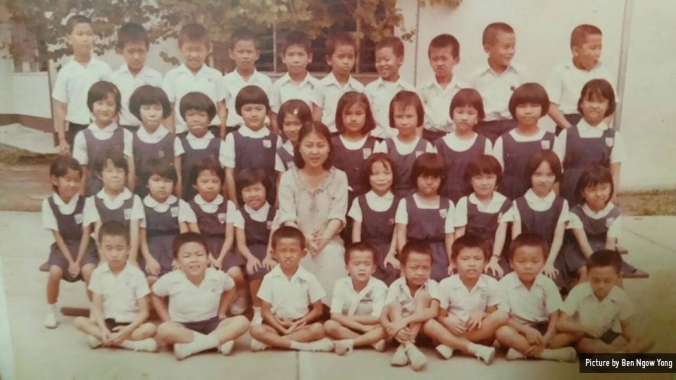
P3C (1980)
After it closed because of falling enrolment, most of the students were transferred to Moulmein Primary School which subsequently merged with Swiss Cottage Primary School in 2002. The school building stood idle for some time until it became the first SCDF Division Headquarters. Today, it houses Curtin University.
McNair Road School (Boon Keng)
Merged into Rangoon Road Primary School in 1968
Opened in 1925 as McNair Road English School, it was an all-boys primary school located at a temporary structure of Rangoon Road Government English School (before it was torn down) until it moved to requisitioned buildings.

1950
In 1948, McNair School reopened and a large number of primary school students moved over from the old Rangoon Road School. However, it was reported that McNair School was later converted into a Centralised Workshop and staff and students joined the newly merged Rangoon Road Primary School (closed in the early 1980s) at Starlight Road.
Siglap Indah Primary School (Siglap)
Closed in 1983
Located at Kee Sun Avenue, the former Siglap Malay School started off as a kampong school built on wooden foundations in 1903. In 1966, the school was upgraded to a concrete building and eleven years later, converted to an English medium school and renamed to Siglap Indah, or Beautiful Siglap, because of its earlier kampong surroundings and nearby sea.
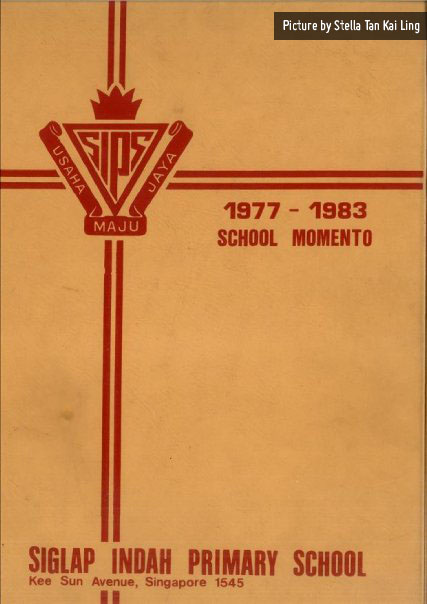


P1A (1983)
Non-graduating students of Siglap Indah were posted to the five schools in the area namely Damai, Jaya (closed 1998), East Coast, Ngee Ann and Min Xin (closed 2003) primary schools. The school had to shut after Mendaki Foundation was given permission by the government to use the premises as its headquarters because of its proximity to Marine Parade, Bedok and Geylang, which had large concentrations of Malays. The handover was finalised after renovations works were completed in mid 1985.
Siglap Primary School (Siglap)
Closed in 1990
About 2 km away from Siglap Indah Primary was Siglap Primary, founded 1956 at 10 La Salle Street. The school operated in double sessions (i.e. sessions I and II) and had uniformed groups that students could join as ECAs such as Scouts and Brownies. It is not known why the school was closed but after it was vacated, the building was used by the Associations for Persons with Special Needs (Katong Special School) until it was launched for public tender in 2009. Most of the students were transferred to Opera Estate Primary School.

Now
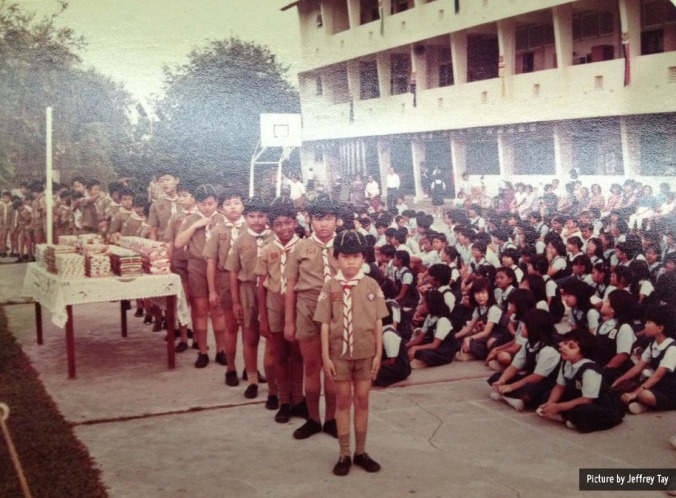
Ex-Mediacorp actress Ivy Lee is an alumna of the school.

P6A (1985): Ivy lee is fourth girl from left in the front row
Opera Estate Boys’ School
Opera Estate Girls’ School (Siglap)
Merged in 1985 to form Opera Estate Primary School
The exact year of inception of Opera Estate Girls is not known but since single-sex schools that were catered to residents within an estate were typically built around the same time during that era, it is safe to assume that it was in 1959 when Opera Estate Boys was founded. Both schools were located side-by-side along Fidelio Street – now home to Opera Estate Primary School and surrounded by private housing.

Opera Estate Boys’ School

Opera Estate Boys’ School
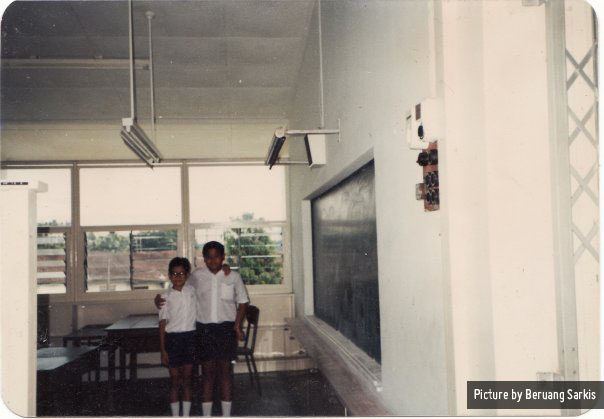
Opera Estate Boys’ School

The only image of Opera Estate Girls’ students I can find…
I can’t find much about these schools except for the interesting fact that the school song of Opera Estate Boys was written by their first principal, Mr BR Sethi. In 1977, Opera Estate Girls found themselves in the spotlight when four of their primary six pupils beat Raffles Girls’ Primary School in the Primary Science Quiz organised by the then-Science Teachers Association. Both also held fun fares separately to raise funds for their own projects in 1969 and 1979. This could also suggest some form of financial struggle faced by the schools and thus leading to their merger. After the amalgamation, the girls were required to swap their green pinafore with white stripes for an entirely blue one. A new school logo created with colours representing the former schools was also adopted as a result.

Opera Estate Primary School
I think it’s amazing how the Opera Estate Primary has been retaining its original name after all these years when the word “estate” (also undoubtedly not the most modern-sounding one) had been dropped from the names of other schools that used to have the word incorporated in them (e.g. Sennett Estate School and later Sennett Primary School). What do you think?
Source: [1] [2] [3] [4] [5] [6] [7] [8] [9]
Convent of the Holy Infant Jesus (Opera Estate) (Siglap)
Merged with Katong Convent in 1990 to form Katong Convent Primary School / CHIJ (Katong) Primary
CHIJ (Opera Estate), or more commonly known as Opera Estate Convent, was set up as a government-aided primary school at Jalan Khairuddin in 1959 to cope with the growing demand for places in Katong Convent which had housed both primary and secondary students before the latter relocated to Marine Parade Road. It was subsequently closed at the end of 1989 because, according to a former student, the hill it was built on was eroding. Thereafter, it was absorbed into the newly-furnished CHIJ (Katong) at Martia Road.
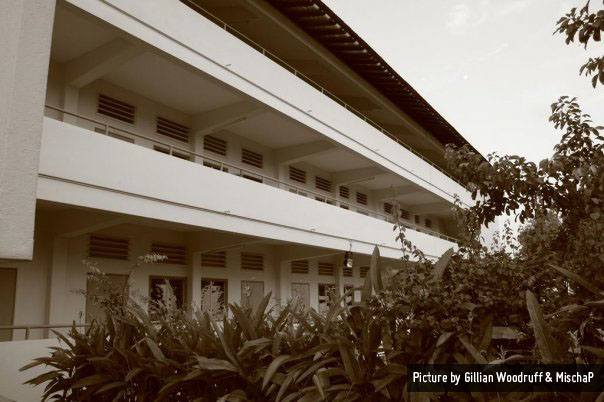

Toilet on the left

P6A, class of 1978
The premises of Opera Estate Convent, pretty much still in its original state surprisingly, are known as the Red Cross Training Campsite today.
Source: [1] [2] [3] [4] [5] [6]
Whampoa Secondary School (Bendemeer)
Closed in 1994
The Chinese secondary school was established in 1961 at St. Wilfred Road but was later converted to an integrated school due to falling enrolment (and declining popularity of Chinese schools) to accommodate students from the English Language stream.
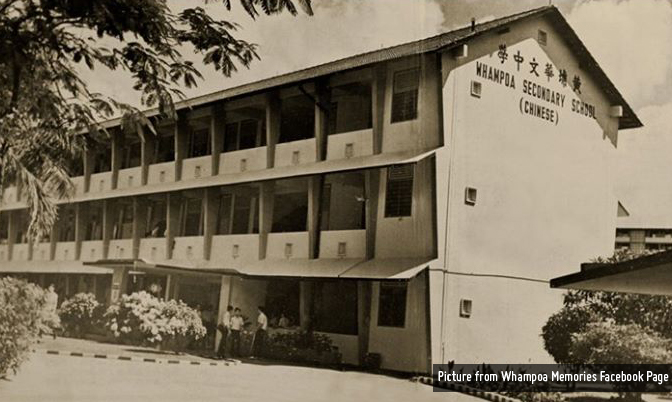

In 1971, it became the first government school to complete a building extension without government financial aid. Most of the funds came from public donations and proceeds from the school’s funfair held in 1969. The new wing boasted a library, history and geography rooms, a sound-proof music room, extra-curriculum activities hall, art display room, bookshop and physical exercise instructors’ room. Hardly anyone would find these amenities impressive today but these were definitely a big deal then, as well as a major pull factor.

After it became integrated

But then came 1980 when the school principal drew public ire for snipping several girls’ hair publicly in front of the whole school to enforce a rule against long hair. It was also reported that some girls had to have their hair cut two to three times before the principle was satisfied. What angered students and parents further was that the act of embarrassment was done a day before the examinations. Upset by the unwarranted treatment (as many had thought that the principal’s prior warnings were meant for the boys), some girls had even contemplated suicide.
As years went by, the school began to suffer from a dip in enrolment once again. It stopped accepting new applicants altogether for the academic year 1994 when the total student population in the school plunged to 280 (including those in graduating classes) – a far cry from the 1500 pupils in its heyday during the seventies. This reason, coupled by poor academic performance, eventually led to the closure of the school. Bendemeer Secondary, which I believe largely took in Whampoa Secondary students when they closed doors for good, has been occupying their former site since 1998.
The school also has a private Facebook group with over 1000 members.
Source: [1] [2] [3] [4] [5] [6] [7] [8]
Bartley Primary School (MacPherson)
Closed in 1986
Set up in 1951 at Jalan Bunga Rampai, Bartley Primary School was housed in a 2-storey building in a serene and conducive environment not too far away from Mount Vernon cemetery. The school’s distinctive feature was their vast number of Nepalese children (more specifically children of Gurkha policemen from the Singapore Police Force at Mount Vernon) who, by 1985, accounted for more than one-third of the school population. Former students also remember having an Indian principal (Mr Valipuram, or just Mr Vali) patrolling around the school compound with a cane in his hands. Oh, don’t we all miss those days when educators were given the rights to discipline their students? We were fearful but at least we grew up respectful of our elders.

As the school field was always flooded especially during the monsoon season, annual sports meets were mostly held at the field belonging to neighbouring Bartley Secondary School. Those who were present would fondly remember being given a coupon to redeem a piece of cake from Season Bakery and a cup of Milo or Ovaltine.

Most of the students were transferred to nearby Elling (closed 1996) and Cedar primary schools after the school was closed down. The school building has also since been demolished.
Paya Lebar School (MacPherson)
Closed in 1984
The primary school was a one-storey building opened in 1952 at Lorong Bengkok, off Paya Lebar Road, with only seven classrooms. It is not to be confused with Paya Lebar Methodist Girls’ School which started with the same name. Established without a school field, tuck shop, electricity or modern sanitation, the school gradually expanded with better facilities when population steadily grew to 1200 by 1971.
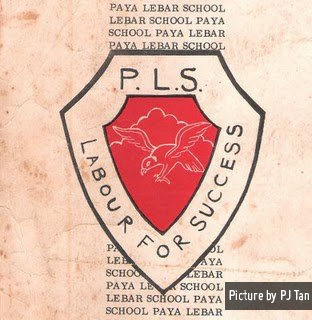



Former students were then dispersed to MacPherson and Bartley primary schools after their school closed. The site is now taken over by adjoining MacPherson Secondary School, which is slated to merge with Broadrick Secondary in 2017 (more details below).
Upper Aljunied Technical School (MacPherson)
Closed in 1996 (verification needed)
Located along a quiet Upper Aljunied Road, Upper Aljunied Technical School faced the Mount Vernon Camp and shared a field with Sang Nila Utama Secondary School. As a result of the close proximity to the shooting range of the camp and the Singapore Gun Club, students could often hear explosive sound of firing guns in the afternoon while they were having their ECAs. Although the founding year of the school is not known, it can be assumed that it was in the mid to late 1960s when there was a surge of demand for technical education.

School badge on bottom left (1971)
The four-storey building had male toilets at the end of every odd-numbered level and female on even. The ground floor was occupied by two Technical Drawing rooms, two Electrical Workshops, one PE stall and a bookshop while the staff room and library took the second floor. Classrooms were mainly on the third and fourth floors.
Upper Aljunied Technical School was the first in the Aljunied district to offer computer classes all the way from Secondary 1 to 5 with the opening of a micro-computer laboratory. They were also among the 18 government schools in Singapore in 1988 to have a computer lab.
The school was closed presumably due to falling enrolment and was merged into Upper Serangoon Technical School which was then renamed to Upper Serangoon Secondary School (verification needed). The building is now used as a student hostel with the tuck shop converted to a seafood restaurant.
Kembangan Primary School (Kembangan)
Closed in 1987
Originally known as Kembangan Integrated Primary School, it was the 36th school opened by the PAP government built in the heart of the kampong in 1963. The four-storey building had 24 classrooms, three special rooms, a large teachers’ common room, bookshop and a big tuck shop-cum-assembly hall and could accommodate more than 2500 pupils in both morning and afternoon sessions.


1987
Students who went to Kembangan Primary were relatively poorer than those who attended nearby Siglap Primary and St. Stephen’s Primary schools. The school was also mentioned at the parliament meeting in 1981 to be one of the five schools with the best academic progress.

1987
In 1986, about a year before Kembangan Primary rolled down their shutters for good at 2 Lengkok Satu, a school bus carrying 13 of their pupils had its emergency exit doors flung open when it collided with a lorry. A nine-year-old girl who was hurled out of the bus died on the spot while other eight children in the vehicle sustained slight cuts and bruises. This incident, as well as the court hearing between the drivers involved, was reported extensively on the news.
Source: [1] [2] [3] [4] [5] [6] [7]
Beatty Primary School (Kallang)
Closed in 1995
Opened in 1962 as Beatty Integrated Primary School, the school was a new-type four-storeyed building with 36 classrooms meant for 3000 pupils in both morning and afternoon sessions.

Opening ceremony (1963)
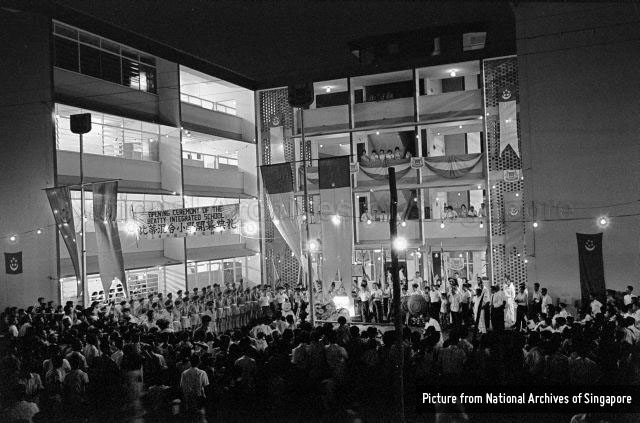
Opening ceremony (1963)
Ex-students fondly remember the infamously fierce lady manning the tidbit stall at the tuck shop who would hurry students to make purchase and chase away those who spent too long deciding on what to buy. Even those who merely enquired about the prices were not spared from her curt attitude. Therefore, to avoid getting yelled at by her, fearful students would scan through the snacks from afar and be readied with all the prices in mind before approaching her stall. Every transaction would end with the lady snatching the money from the student’s hand. Well, let’s just say that she probably wouldn’t have gotten away so easily dealing with the Gen Z’ers and their overprotective parents if she does that today 😆
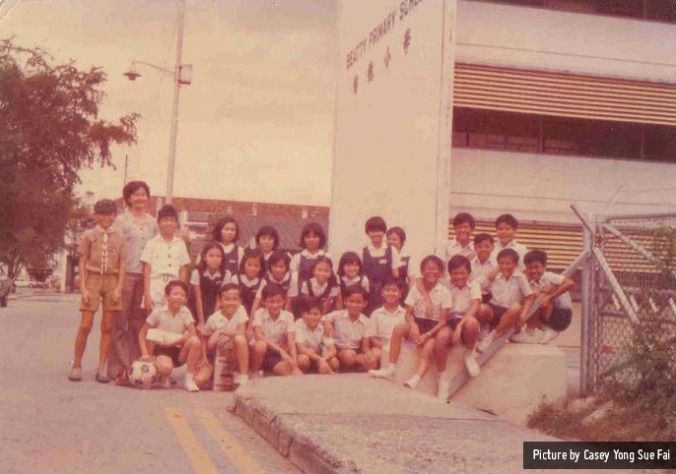
1977
Beatty Primary had a promising start with 2500 pupils but the number gradually slipped to 200 in the last few years before it closed as more families in the neighbourhood moved to newer housing estates. The remaining pupils started the new school year in Cambridge Primary School and not long after the property was vacanted, it was taken over by Singapore Indian Development Association (SINDA). The building still stands in its entirety.
Nan Chiow Public School (Geylang)
Closed in 1981
Another public Chinese school that bit the dust in 1981 was Nan Chiow (南侨公学) at 59, Lorong 23, Geylang. Established in 1946, it is not to be confused with Nan Chiau (or Nan Chiaw as it was formerly spelled) Primary School at Woodlands Road. Nan Chiow was known for their accomplishments in ping pong as they were always emerged as champions in competitions especially those organised for the Chinese schools in the Geylang district.

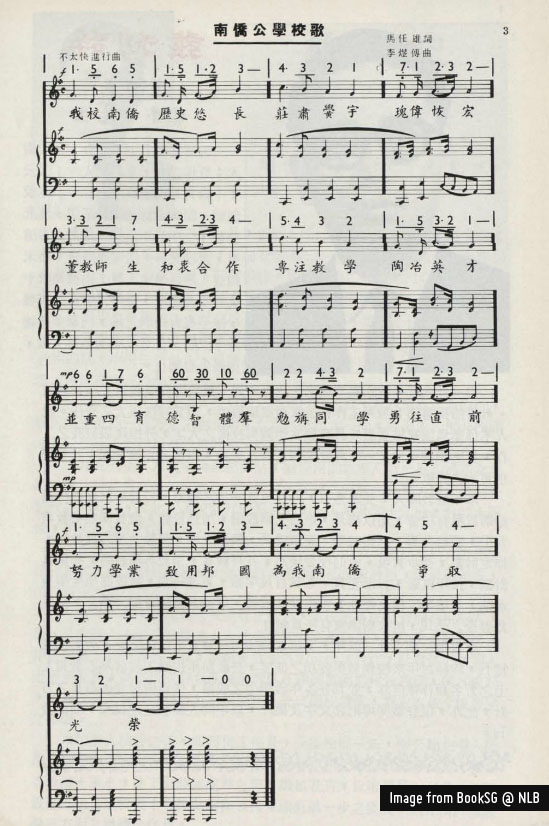
School song
After the school was shut down, the managing committee received over S$600,000 from the sale of the school site but most of the money eventually went to charity with $50,000 of the proceeds donated to the Basketball Association of Singapore.

1969
In commemoration of 35th anniversary of the school in 1981, a grand (and final) reunion filled with performances and other activities was held. The event saw the attendance of more than 250 retired principals, teachers and old boys and girls.
Source: [1] [2] [3] [4] [5] [6]
Hwa Nong Public School (Geylang/Paya Lebar)
Closed in 1979
Located at 87 (727-3) Jalan Alsagoff near Geylang Serai Village, Hwa Nong Chinese School (华农公学) was previously a private school once used as a warehouse by the Japanese troops during the war. Following the surrender of the Japanese, the school became public to provide children from neighbouring villages a means of education.

The school had a humble beginning with a little more than 10 students. As their popularity grew, the number of classrooms increased from 3 to 8 to accommodate 700 student at their peak. An office, music room and storeroom were also added as a result. But due to space constraints, the school was unable to build their own field. Hence, P.E. lessons were all conducted at a borrowed space in front of a temple opposite the school. A simple basketball court was constructed there as well.

1979
Hwa Nong was one of the eight participating schools in Geylang for the annual joint sports meet, with the other schools being Maha Bodhi, Nanyang Tun Cheow, Thong Kheng, Lik Teck, Happy, Seng Chi and Nan Chiow schools (more information about these seven schools can be found below). The venue for the sports meet was at a vacant land at the junction of Paya Lebar and MacPherson roads (presently the back of Shell petrol station).

Report books
The school had to close for a short period in 1964 due to the racial riot which had occurred in the same area. When it reopened, the Primary School Leaving Examination was just around the corner so to make up for lost time, hardworking teachers would conduct supplementary classes every night to get students back on track, even to the extent of dragging unmotivated students out of their homes to attend. Their efforts were not for naught – the school garnered a 78% passing rate that year.
As more villagers move out due to the redevelopment of Geylang Serai, the number of students at Hwa Nong School dwindled, leading to its permanent closure in 1979.
(Wholly translated from here, p94)
Nanyang Tun Cheow School (Geylang)
Closed between 1975 and 1979
Founded in 1922 by Leong Khay Huay Kuan (龙溪会馆), Nanyang Tun Cheow School (南洋丹詔学校/Nanyang Dan Zhao School) was one of the oldest schools in Geylang. With only 30 students when the Chinese primary school first began, the enrolment steadily grew to 600 by the late 1960s. The school then shifted to a new S$92,000 building at No. 43, Lorong 17 Geylang in 1968.
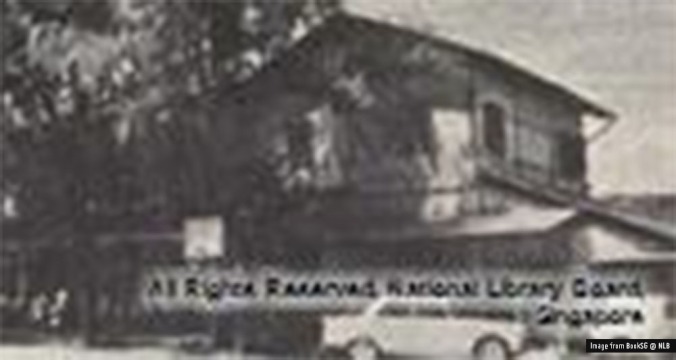
The last known record of the school in print was in 1975, which could suggest that it was still in existence in mid-1970s. The school was, however, closed after facing a sharp decline in student numbers. In 1979, Metropolitan Young Men’s Christian Association (MYMCA) rented the school building which was later known as Sims Centre to serve as the base for the association’s community outreach projects to the youth, elderly and children from lower income families.
The building is presently known as the Nanyang Buddhist Culture Service or the Singapore Buddhist Lodge.
Thong Kheng School (Geylang)
Closed in 1981
Established in 1946 at Kallang Road, Thong Kheng School (同敬学校) was a Chinese school set up for children who were too poor to afford elementary education and the older children who could not get into their standards. Two years after its inception, the school moved to Geylang Lorong 25-A for six years but due to the overwhelming response, Thong Kheng School had to move to the present address at Geylang Lorong 29 in 1954 in order to house 14 classes of a record number of more than 600 students in the morning and afternoon. The school would not be able to sustain the enormous cost of operating the school if not for the philanthropists who were members of the board, patrons and Thong Kheng Temple who donated generously.

Thong Kheng School eventually came to a honourable closure due to depleting students count as a result of redevelopment of the Geylang area, as well as losing out to newer schools with better facilities in the vicinity.
Lik Teck School (Geylang)
Closed after 1972 (exact date unknown)
Lik Teck School (立德学校) was a single-storey Chinese school located at 230E Lorong 29 Geylang Road in the early 1930s. It was attended by Low Thia Khiang who is currently the Secretary General of the Workers’ Party.

Little information about this school is available online. I understand from a Lianhe Wanbao news article in 1986 that a new primary school of the same name (立德小学) was erected in Woodlands Street 81. A quick search on Google, however, came up with Riverside Secondary School (立德中学, founded 1987 at Woodlands Street 81) and Riverside Primary School (立德小学, founded 2013 at Woodlands Crescent), therefore suggesting that the report is inaccurate and could be referring to the secondary school instead.
Happy School (Geylang)
Closed in 1979
Happy School (快乐学校) derived its name from Happy World (or Gay World) which was one of the three amusement parks built in Singapore before World War II. It was set up by the Happy Opera Company to provide free education to children in Geylang who missed out on school as a result of the war and poverty. Lessons officially began in 1946 at the second storey of 24 Lorong 14, Geylang. The free Chinese school started off with 10 over students but gradually swelled to 120 after a new principal came on board.
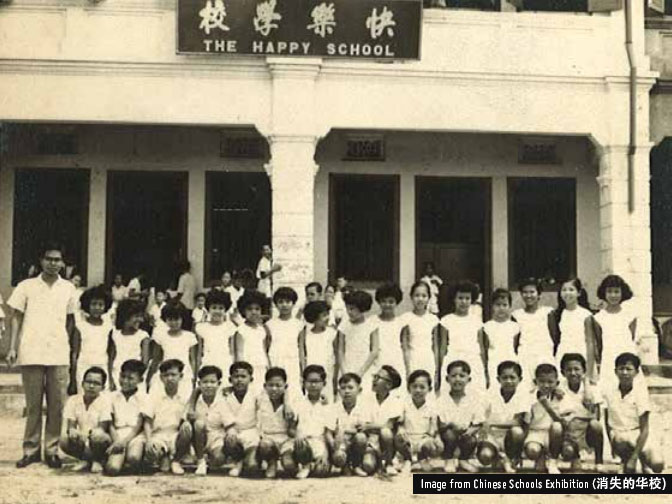
The board of committee had to continuously pour in a lot of money (through holding more opera shows) and source for donors to ensure the school’s survival while making education free and readily available to needy students. Due to the lack of classrooms, an afternoon session was added to cater to growing demand. The pioneer batches of Primary 6 students had to take their Primary School Leaving Examination at a community centre opposite the school due to space constraints. But as more students joined the school (no formal registration was required for new students until they had completed a semester), the board had no choice but to find another suitable location. In 1947, Happy School shifted to two old houses at 67 and 69 Lorong 14, Geylang.
The new sites were, however, in dilapidated condition. Hence, the board had to raise more money to refurbish the place. With more students enrolled in the school, Happy School could no longer cope with the rising overhead costs and so in 1949, they started to charge parents a minimal sum ranging between $2.50 and $3.50 – an amount which most families could afford. From then on, Happy Free School was renamed Happy School. Impoverished students also were given financial aid.
Students of Happy School performed well academically and non-academically such as in calligraphy, arts and sports and had brought glory to the school by bagging home multiple awards at inter-school competitions.
The school remained hugely popular until Geylang began to undergo redevelopment. The population shift from Geylang after 1965 greatly affected the enrolment rate of Happy School. Despite the fall in student population, the school managed to persevere until 1979.
(Wholly translated from here, p142-143)
Source: [1]
Seng Chi Public School (Geylang)
Closed after 1978 (exact date unknown)
Seng Chi Chinese School (成志学校 ) started in 1931 at 47, Lorong 27A, Geylang at an attap house with three classrooms and one small office. Two sessions were held every day with about 100 students divided into three classes. Each class had a mix of students of different standards (e.g. Primary 5 and 6 students attending the same class) because there weren’t enough students to form a class if the school had segregated them accordingly. Therefore, teachers then had to prepare double the amount of work and teach two groups of students separately.

All in all, there were 7 staff including the school principal. The school staff had to take turns to ring the school bell after each period whenever the janitor wasn’t around and the principal had to teach subjects that nobody wanted to teach (e.g. music). Due to shortage of specialised teachers, every class attended music, P.E. and art lessons together.
In 1957, the school was asked to move out by the landlord but the management refused unless they were given alternative accommodation. Although there aren’t any reports on what happened after that, I’m quite certain the school was granted to remain eventually.
The school closed in the late 70’s/early 80’s as a result of falling enrolment. The former site was then also earmarked for public housing development.
Pasir Panjang English School (Pasir Panjang)
Closed in 1986
Constructed in the 1930s as a primary school at Yew Siang Road, Pasir Panjang English School was, in fact, a co-education experiment proposed by the British government for both boys and girls to study in the same elementary school.

In anticipation of the Japanese occupation in 1942, the principal of Outram Secondary School sent all of the school’s records to Pasir Panjang English School for safe keeping a year before under the orders of the Education Department. Subsequently, this school suffered a direct hit during the World War II and wiped out Outram’s records from 1906 to 1942. The school then underwent renovation works and reopened some time after 1948.

1976

1983
It had produced a couple of notable alumni such as our former Prime Minister Mr Goh Chok Tong, former Senior Minister of State for National Development Dr Tan Eng Liang, and the founding President of Nanyang Technological Institute Dr Cham Tao Soon.
Pasir Panjang English School is now occupied by Breakthrough Mission, a drug rehabilitation centre. This halfway house was featured in an SG50 music video by StarHub. Skip to 0:26, 1:23 and 1:52 for shots of the classroom corridor in the video below:
Hua Kiau School (Pasir Panjang)
Closed in 1981
Founded in 1931 on the first floor of a shophouse at 8km Pasir Panjang Road with only 17 pupils, the Chinese school later functioned in an attap building near the now-defunct Bakau Lane (still within Pasir Panjang) in 1940 and subsequently in a more solidly-built double-storey structure half a mile away. Completed in 1960 on two-and-a-half acres of land on Pasir Panjang Hill (5½ milestone Pasir Panjang Road) near Haw Par Villa, the final relocated address had a commanding view of the sea and the southern islands. It had 26 classrooms to accommodate 1400 pupils, an office, library, common room, stage and assembly hall to boot. It was also the first building in the area to introduce modern sanitation. All these were made possible by the generous contributions of the residents in the vicinity and through the sale of cinema show tickets.

Despite the new state-of-the-art facilities coupled with the school’s rich history and robust activities, the enrolment rate failed to live up to expectations. From over 800 students when it first moved, the number dropped to less than 200 in seven classes in 1977 with only a handful of students registered for Primary One that year. This was in spite of the fact that the school had already been allowed by the Education Ministry to enroll students in English-medium classes.

1986
After the school’s closure, the building was renovated and occupied by the Colombo Plan Staff College (a training college for senior personnel in technician education from Colombo Plan countries) in 1983. However, the college was eventually asked to move out of Singapore within the next three years “in fairness to other countries“. Based on the today’s map, the former site is now occupied by private estates.
Sepoy Lines School I / Pearl Bank School
Sepoy Lines School II / Park Road School (Chinatown)
Merged in 1985 to form Pearl Park Primary School (verification needed)
Merged into Pearl’s Hill School in 1995
Closed in 2001
Among the hundreds of expunged schools I had researched on to feed my curiosity about disappearing schools in Singapore, reading up about those in Chinatown area always left me utterly bewildered especially since many of them share rather similar names. I am one who is easily confused so in a way I’m glad the MOE has long ceased to name schools after the locality where they will be established.
From what I had gathered online (after sifting through tens and hundreds of web pages because everyone seems to be saying different things), there used to be two Sepoy Lines Malay schools. Sepoy Lines School I was renamed Pearl Bank School when it moved to Pearl’s Hill on 15 June 1954 while Sepoy Lines School II was later known as Park Road School.

Pearl Bank Primary School

Pearl Bank Primary School (P6A, class of 1981)
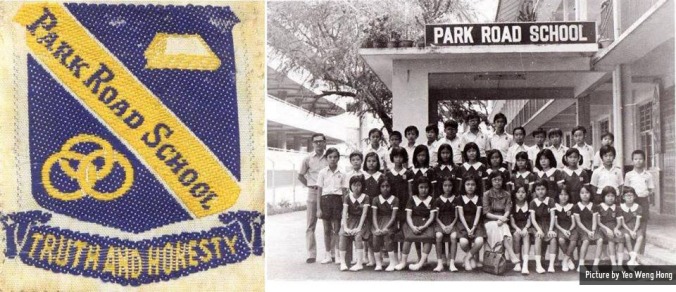
Park Road School
As I was trying to unearth more information about the first merger, I stumbled upon even more ambiguous and confusing news articles about the Sepoy Lines school. It was reported in 1971 that the Sepoy Lines Malay School building was demolished as part of the urban renewal programme to build offices in the Park Road vicinity. Noticed that “Sepoy Lines Malay School” was used instead of Park Road School? *scratches head*
Can somebody enlighten me, please? Were there more than two Sepoy Lines schools in that area or what? O_O Why do I see ex-students of Park Road School addressing Sepoy Line Malay School on Facebook like it’s another school? How mysterious.

Pearl Park Primary School
Anyway, Sepoy Lines Malay School was then shifted to the first two floors of a multi-storey building at Chin Swee Road (the record-breaking 12-storey tall building, I suppose) that was shared with Pearl’s Hill Primary School. Somehow along the way, Sepoy Lines Malay School merged with Pearl Bank School and eventually with Pearl’s Hill? Apart from the nuggets of history on NLB, there were no other news reports to confirm any of these mergers. It’s so weird…
To read more about Pearl Hill’s School, click here for part I of the Closed and Merged Schools series.
Kong Chow School (Chinatown)
Closed in 1968
Cantonese clan association Kong Chow Wui Koon founded Kong Chow Wui Koon Free School (冈州会馆义学) in 1929 on the third storey of their then-newly-built clan premises at New Bridge Road. The school provided free education to their initial 80 students across Primary 1 to 4 levels, occupying only two classroom. All lessons were conducted in Chinese.
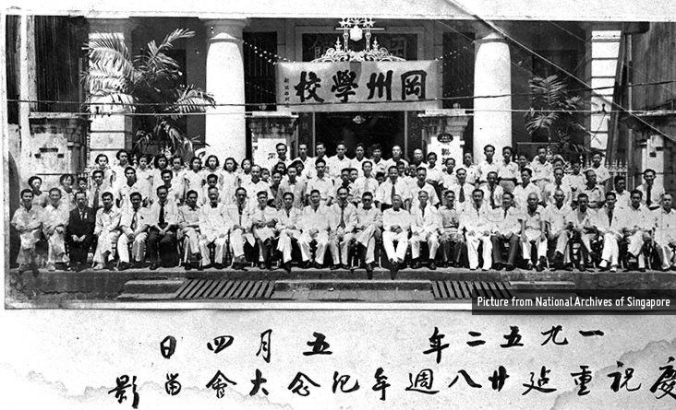
1952
During the Japanese Occupation (February 1942 to August 1945), the site was used as the Red Cross Association Headquarters to provide medical treatment, medicine, and even porridge. Classes at the school resumed after the Japanese surrendered but due to post-war recession, the school found themselves struggling to keep afloat without any steady revenue. Thus, they started charging fees between $1 and $5. From then on, the school was also known as Kong Chow School (冈州学校).
In order to cope with the influx of overaged students after Japanese Occupation, the clan association decided to expand the school grounds to the second storey of the premises to accommodate as many students as possible. Classes were divided to two sessions – morning and afternoon – as the number of students exceeded 200.
Primary 5 and 6 classes were subsequently added in 1949. By then, the school’s population was more than 400 students. Facilities such as a field were also added for students to play sports and exercise.
Between 1947 and 1959, there were 9 classes in the afternoon session with over 500 students. The school faced classroom shortage as the number of students continued to increase rapidly. Hence, the clan association had no choice but to turn the balcony on the second storey into a classroom to occupy the smallest class.
During the school’s heyday, the clan association also conducted night classes for young people in the workforce. Over 100 of them enrolled into the Chinese and English classes. At the same time, the clan association also attempted to raise funds to build a school, but it wasn’t reported if this plan was materialised.
In addition to regular classes, the school also inculcated strong values and character in their students through specially dedicated weeks that run throughout the semester such as Courtesy Week, Safety Week, Honesty Week and Labour Week. Activities that tied in with the theme of the week were also arranged. During the Courtesy Week, for instance, a most courteous representative would be elected from every class and the whole school would then vote for the most courteous student among them. Weeks which were designated for hands-on activities such as calligraphy and sports helped students develop their skills and ability to work as a team.
In the 1960s, the student population in Kong Chow School began to diminish with more parents opting to send their children to English school. After further decline, the Principal, who had also planned to retire, decided to close the school for good in 1968.
(Most parts translated from here)
Jurong Special Secondary School (Bukit Timah)
Renamed to Toh Tuck Secondary School in 1965 (verification needed)
Closed in 1991 (verification needed)
Formerly Bukit Timah Government Chinese Middle School at 7¾ milestones Jurong Road, off Bukit Timah Road (now known as Toh Tuck Road), it was a school set up mainly for overaged students from Government, aided and private schools to continue their English secondary education. Classes officially began in 1960 with curriculum for Forms (Secondary) III, IV and V consisted of English language, English literature, History, Geography, Elementary Mathematics, Art, Needlework for girls, Biology or Health Science, language and National language. The school fees were same as other secondary school pupils (i.e. $3 a month for girls and $4 a month for boys). No much information about this school is available online. I can’t find any pictures depicting the school as well.
Several pupils of the school took offense over the use of the word “special” in describing the institution. The reason for that wasn’t stated but they probably felt singled out. I would understand the furore if the “special” word is incorporated in a regular school today as it could be mistaken for a special needs school.
It was mentioned by a former student on Toh Tuck Secondary’s Facebook Page that Jurong Special Secondary School was eventually renamed to Toh Tuck Secondary School (as opposed to Jurong Secondary School, as this name was already taken by another school in Jurong West) in 1965, coincidentally the year Jurong Special Secondary was last reported in the news (which is strange for a school that opened to so much fanfare). Although no records on this renaming exercise can be found, I have a hunch that it was true based on the similarity between the address of Toh Tuck Secondary (off 7th mile Bukit Timah Road) and Jurong Special Secondary.
Min Chu School (Farrer Road)
Closed in 1979
Established as a Chinese village school in 1946/1947 using kind donations from locals residing in Farrer and Holland villages, Min Chu Public School was one of the best in the area in the 1960s with 400 students. During its prime, the school was bustling with activities such as basketball, badminton and ping pong. It even had its own playing field. The toilets underwent a $4000 renovation but even so, the school still failed to attract new registrations.
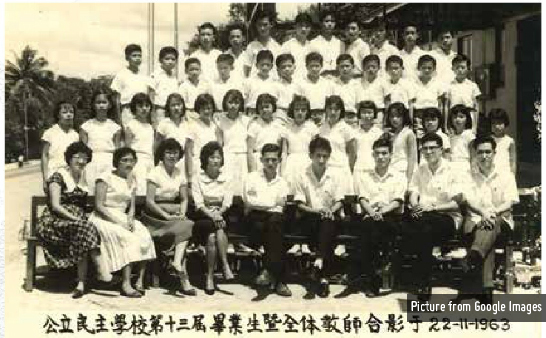
1963
As a result of falling enrolment due to competition from modern schools that were equipped with special rooms, sport equipment and the latest teaching aids, the school had to shut permanently after its remaining 19 students completed their primary education.
Wei Sin Public School (Jurong West/Lim Chu Kang)
Closed in 1979
Formerly known as Wu Neng School (武能学校), Wei Sin was a small village school established in 1926 at 14.1 km Jurong Road. It was forced to closed in 1942 but resumed operations in 1945 when the Japanese surrendered at the end of World War II. It was also at this point in time that it took on the name Wei Sin.
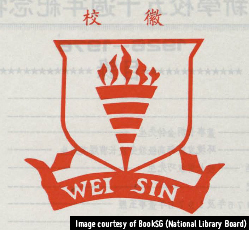

School song
The school uniform was white top and khaki pants for the boys and khahi skirts for the girls. The school had their own tuck shop, makeshift badminton court, basketball court, ping pong tables and a wooden hut called The Library.

At its peak, Wei Sin had over 600 students. But due to population shifts and the fact that Jurong was selected as the site for the development of an industrial estate, the strength of Wei Sin Public School dwindled tremendously. Upon time of closure, it had only 55 students remaining (27 in Primary 5 and 28 in Primary six). The Primary 5 students were then transferred to neighbouring modern schools the following year.
Pei Tek Public School (Jurong West)
Closed in 1981
A Chinese-medium school established in 1946 Pei Tek School (also spelled “Pei Teck”) had moved from a smaller location to 10¾ mile, Jurong Road when student population grew between 1958 and 1969. It was so popular that it had to keep adding more classrooms to cater for demand.

School song

1963
But like other Chinese schools that could not keep up with the shifting demographics and growing preference for English-medium schools, signs of decline of Pei Tek started appearing in mid-1970s. Although there were 281 students enrolled in 1976, there wasn’t enough incoming primary 1 students to form a class.
Source: [1]
Lee Choon Public School (Buona Vista)
Closed in 1979
Lee Choon Public School was a Chinese primary school established in the 1920s at North Buona Vista Road (off Holland Road). Like the other rural schools on this list, Lee Choon had to close due to falling enrolment triggered by a widespread preference for modern schools that were equipped with better facilities. There were only 27 students at Lee Choon at time of closure.
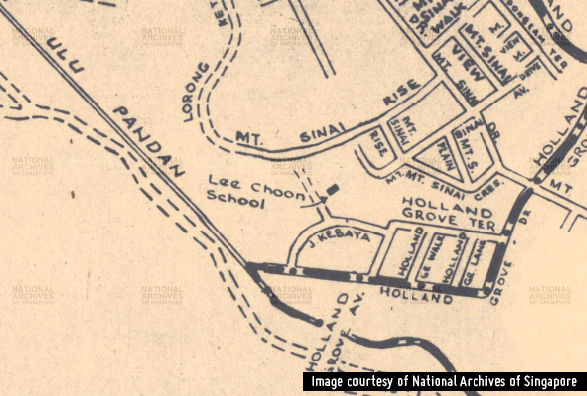
Unfortunately, not much information about this school is available.
Chao Yang School (Dhoby Ghaut)
Closed in 1981
Located at 341 Clemenceau Avenue, Chao Yang was a four-storey Chinese Government-aided (primary) school established in 1953 and managed by a Teochew clan association Teo Yeonh Huay Kuan (潮阳会馆) which, at that time, was just beside it. It is not to be confused with the special needs school at Ang Mo Kio which adopted the same name in gratitude of the original Chao Yang School management committee for allowing them to use the school premises for a 5-year period before it moved to Ang Mo Kio to make way for the Central Expressway.


In the last 1970s, Chao Yang School started admitting students of other nationalities to ensure their survival. This, however, proved to be futile as enrolment continued to dwindle due to urban renewal and modernisation. By the end of 1981, the school had just one class of 14 Primary Six pupils and 2 teachers.
Source: [1] [2] [3] [4] [5] [6]
Min Chong Public School (Changi)
Closed in 1981
Two schools (Bo Wen and Pei Nan schools) were originally constructed at Mata Ikan, a village at Changi, to offer education to the villagers’ children. But not long after that, the second world war broke out so both schools had no choice but to cease operations. After the war ended, the committee of Pei Nan School decided to reopen the school for the benefit of those children whose education was disrupted because of the war. The committee rented a three-storey bungalow that was able to accommodate 150 students, and also employed 10 teachers. At the same time, the school was also renamed Min Chong School (民众学校).

1986

Basketball court (1986)
In order to cater to the needs of Malay villagers who were not able to integrate into the Chinese education system at Min Chong School, the committee introduced English-medium classes, and therefore making them the first Chinese school in post-war Singapore to offer English classes. Subsequently, new English-medium schools such as Bedok Boys’ and Girls’ sprang up one after another around the area and Malay villagers began to send their children to these schools instead, resulting in the declining demand for English-medium classes at Min Chong. The school eventually stopped the programme completely and reverted to its original concept of being a fully Chinese school.
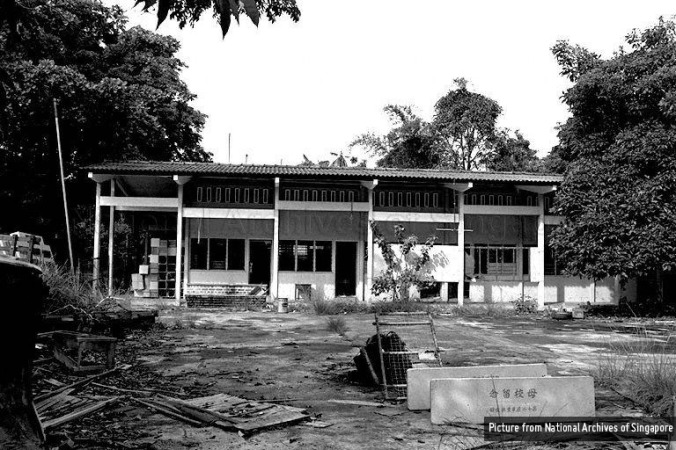
1986

Sports Day
In 1948, the owner of the bungalow which housed the school wanted the property back. As a result, Min Chong School committee relocated to 823 Somapah Road. By 1972, the number of students at Min Chong had also noticeably diminished. There were speculations as to the possible causes of the dip in enrolment. Firstly, as there were only 59 registrations for Primary One in the beginning of 1971, the school, being cost-effective, decided to open only one class for 44 students. The remaining 15 students were then dispersed to neighbouring Red Swastika School and this led to numerous complaints as well as the unhappiness of many parents towards the school, making them reluctant to register their children at Min Chong in the subsequent years.

1966
Secondly, the construction of Changi Airport could have caused affected residents to relocate. Hence, with lesser people residing in the vicinity, the number of incoming also students decreased drastically. By 1977, there was absolutely no new student intake at all and there were only 17 students remaining in the school in this final year of operation. With a heavy heart, the school committee announced the closure of the school with effect from the following year and offered the building to the Singapore Red Cross. With the help of Min Chong School committee, the premises were converted to an emergency evening clinic serving people living in the rural area of Somapah.
(Almost wholly translated from here)
Nong Min Public School (Simei)
Closed in 1977
Set up by predominantly Hokkien and Hainanese merchants and farmers in 1946 using their own money and resources, Nong Min Public School (农民公学) was in a poorly-maintained military police warehouse left behind by the Japanese troops at Jalan Tiga Ratus (Upper Changi Road), set amidst the rubber and coconut plantations in a tranquil and peaceful village environment. The aim of the Chinese school was to provide education to 300 poor village children who had no school to attend.

Due to the lack of classrooms, it was not unusual to combine classes. Multi-age classrooms were a commonplace (especially during the first few years of establishment) to accommodate students whose studies were interrupted by the war as well as young children from the post-war baby boom. For example, a Primary One class could have a mixture of students between the age of 7 and 18. Some lessons had to be conducted in the rubber plantations as well to relieve overcrowding in the classrooms.
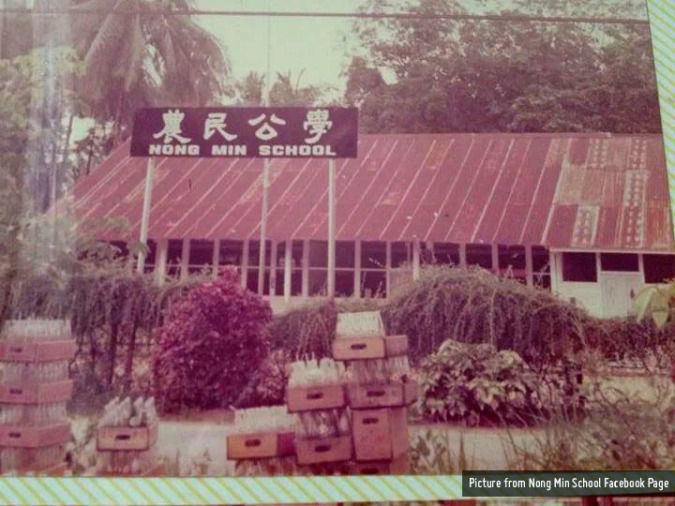
The school was renovated in the 1960s and not long later in 1977, the land which the school sat on was acquired by the government for redevelopment. As a result, all the villages were resettled and Nong Min School was forced to close.
The school was located in the present East Point Mall in Simei.
Kwong Wai Shiu Peck Shan Ting School (Bishan/Upper Thomson)
Closed in 1981
Originally named Kwong Wai Shiu Peck Shan Ting Free School (, the Chinese school was formed by Cantonese clan association Kwong Wai Shiu Peck Shan Ting (or Kwong Wai Siew Peck San Theng) with public donations of about $300 in 1936 to provide free education to children who did not have access to school. The school’s first principal worked pro bono and only one teacher was employed to teach a class of 40 students. Lessons officially started in September in the same year. As the student population grew to 60, another classroom was later added to the school, which was housed on the foundation’s temple premises.

Thereafter more monetary support started pouring in for the school and hence giving more students the opportunity to study. The school also received a thousand over copies of textbooks and more than 130 school uniforms from the educated members of the public. On top of that, a garden was also set up in the school compound for learning purposes.
Singapore fell to the Japanese in 1942, forcing the school to close abruptly. But it was quick to resume operations after the war ended in 1945. By then, the school was already in bad condition and was lacking the necessary teaching equipment. Even so, that did not stop parents from registering their children with the school, therefore boosting the student headcount to 170.
With student enrolment growing steadily in the next 9 years, the committee decided to build a bigger school to admit more students. A new school building was completed within a year in 1956 at Kampung San Teng (a Cantonese village that began as a small community of settlers engaged in the funeral trade) at Upper Thomson Road. Equipped with six classrooms, a principal office, staff room, school hall, canteen, book shop and storeroom, the school was considered the most modern and ideal school in the village at that point in time. It was also subsequently renamed Kwong Wai Shiu Peck Shan Ting School (广惠肇碧山亭学校).
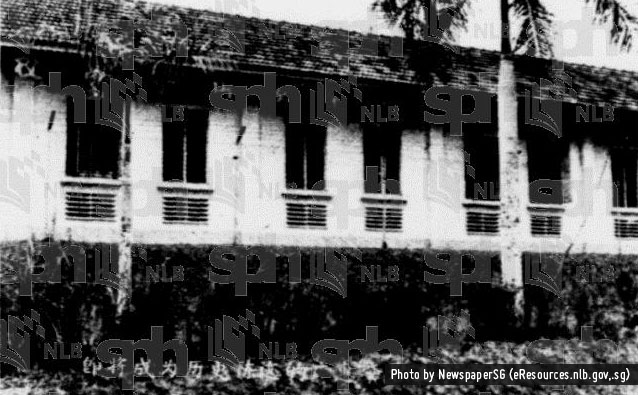
The school underwent a drastic makeover under the direction of the school committee. Besides having basketball, volleyball and badminton courts, new teaching aids were also bought. Financial support was sought from the education ministry to purchase new tables for the students while old tables were donated to needy students who could otherwise not be able to afford one for their home and thus had to do their homework on the floor.
Sadly, despite the favourable reception at the beginning, the school, as with most Chinese schools, were overshadowed by the growing popularity of English schools (such as the newly constructed Westlake Primary nearby, closed in 2002) and faced the prospect of closure due to flagging student enrolment. Even though the school had sought permission from the education ministry to hold English-stream classes, it failed to receive an approval.
Kwong Wai Shiu Peck Shan Ting School, once abuzz with 450 students filling the campus grounds every day in the morning and afternoon sessions, was down to 59 students – 19 Primary 4, 16 Primary 5 and 24 Primary 6 – in the morning session before it shut down. Following its closure, remaining students were transferred to newer schools in Ang Mo Kio.
The former site of Kwong Wai Shiu Peck Shan Ting School, originally earmarked for either an old folks’ home or columbarium cum funeral parlour, is present-day Bishan public housing estate.
Kota Raja Malay School (Bugis/Lavender)
Closed in 1982
Formerly occupied by Victoria Bridge School, Sekolah Melayu Kota Raja or Kota Raja Malay School took over the two-storey building in 1933. The school was sited opposite the present Malabar Mosque in Jalan Sultan (Lavender Street) and was an all-boys school while most Malay girls attended Kampong Gelam Malay Girls’ School located where Madrasah Aljunied is today. The school later applied to become integrated (coed) in 1979 because in the previous year, only one registered for Primary One where there were 42 vacancies.


In the past, there was no Malay library as reading habit was not cultivated yet. The Malay library at Kota Raja Malay School was the first and on Saturdays, pupils from other Malay schools would go there to read and borrow books.
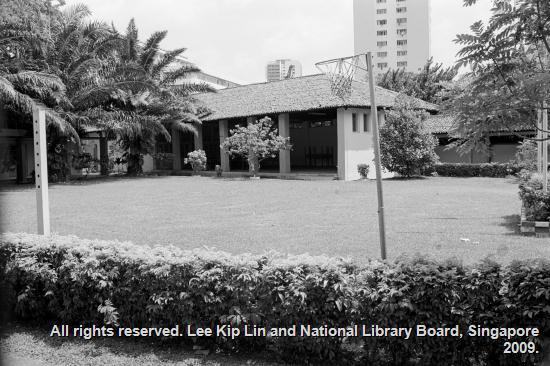
School field

With only 32 remaining pupils in Primary Three, Five and Six and 7 staff including the principal, the school was no longer viable and had to close in 1982. The school was originally leased to the Council for the Education of Muslim Children (Mendaki) as headquarters for organising educational activities, but was later found unsuitable because the site would be affected by government redevelopment plans within the next five years. The building has since been demolished.
Abbas Abu Amin (Member of Parliament from 1980 to 1991) is an alumnus of the school.
Source: [1] [2] [3] [4] [5] [6] [7] [8] [9]
Boo Teck School (Farrer Park)
Closed in 1981
Established in 1955 by Nanyang Sim Clan Association (南洋沈氏公会), Boo Teck School (武德学校) was named after an ancestor. After receiving a sizeable amount of donations, it moved from the old, run-down building to one that was newer and bigger at 63, Beatty Road in 1959 as the former location was not able to accommodate the growing student population (10 classes in that year).


Unfortunately, with more parents opting to send their children to English-stream schools during the early 70’s, Boo Teck gradually lost its shine and the number of students was reduced to a mere 16 in its last operating year.
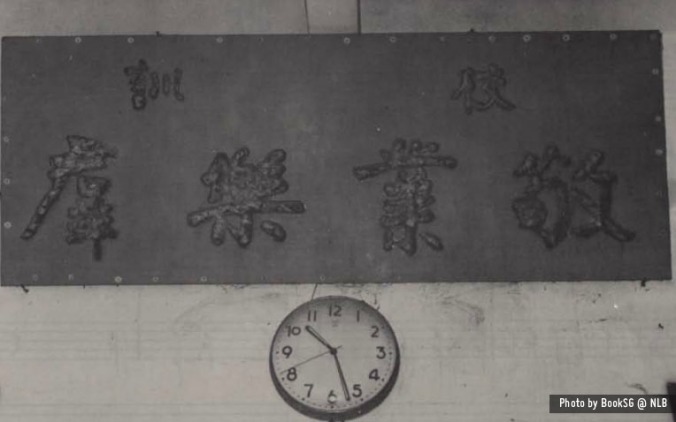
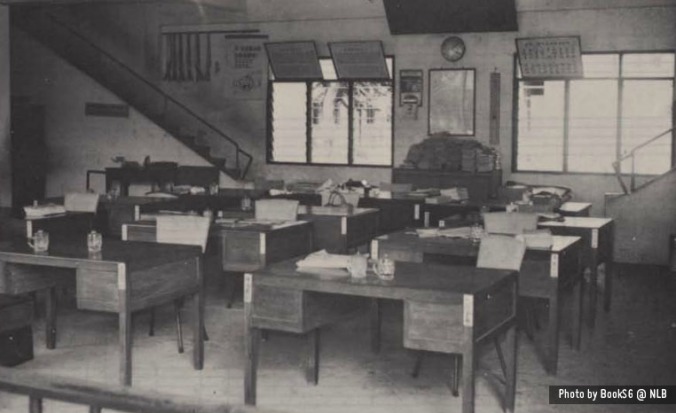
In 1988, the school building made way for Wu De Building (武德大厦), a residential complex.
Finally, continuing this list of school casualties are these 11 secondary schools (as opposed to the 22 reported on the news as I believe half of them will retain their names, so they will technically still be in existence) which will be a thing of the past due to falling cohort sizes. The names of the merged schools have not been decided upon yet but I will update this post once I’ve gotten hold of the news. Now, brace yourselves for the massive addition..
Balestier Hill Secondary School (Novena)
To merge into Beatty Secondary School in 2017
Established as the first technical school in 1964, the former Balestier Hill Integrated Secondary Technical School was a coed school for Chinese and English languages with 26 classrooms. It was named after Joseph Balestier, the first United States Consul of Singapore. In 1982, it became a standard English medium school when the last batch of Chinese medium students graduated. In 1991, the name of the school was changed to Balestier Hill Secondary.

1964

School logo – then and now

Sec Tech 4 (class of 1968)
Balestier Hill Technical had an excellent track record in the area of sports, especially canoeing (as the school shared honours in the National Schools Canoeing Championships with National Junior College in 1983) and swimming.
Rangoon and Monk’s Hill Secondary schools merged into Balestier Hill Secondary in 2001 and 2007 respectively and the amalgamated school continued to operate from the current site of Balestier Hill Secondary at 11 Novena Rise.
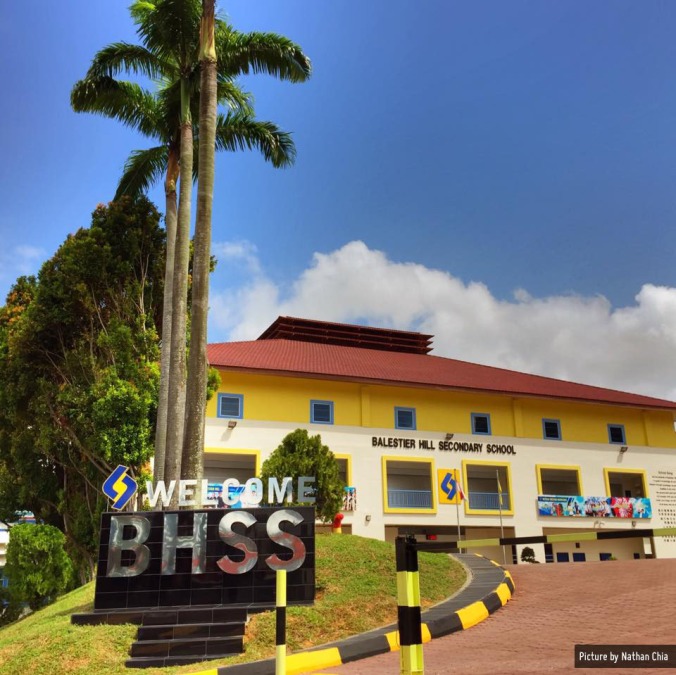
circa 2015
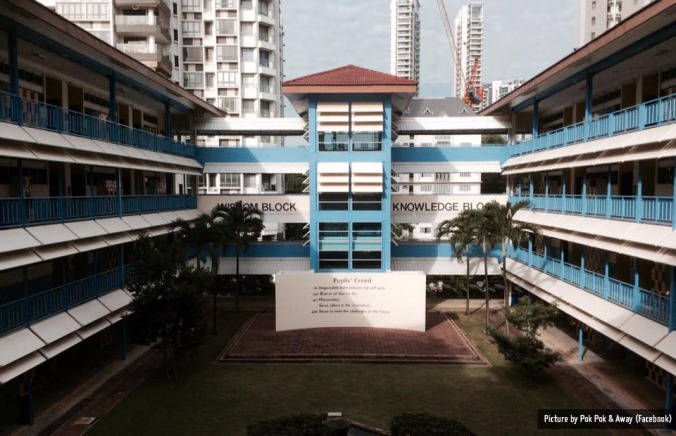
2016
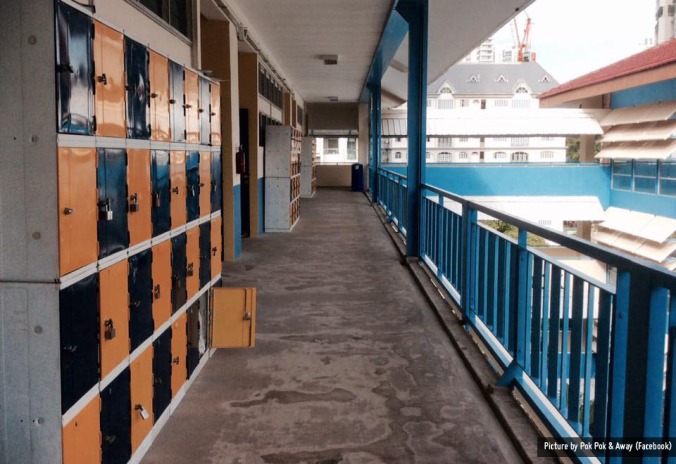
2016
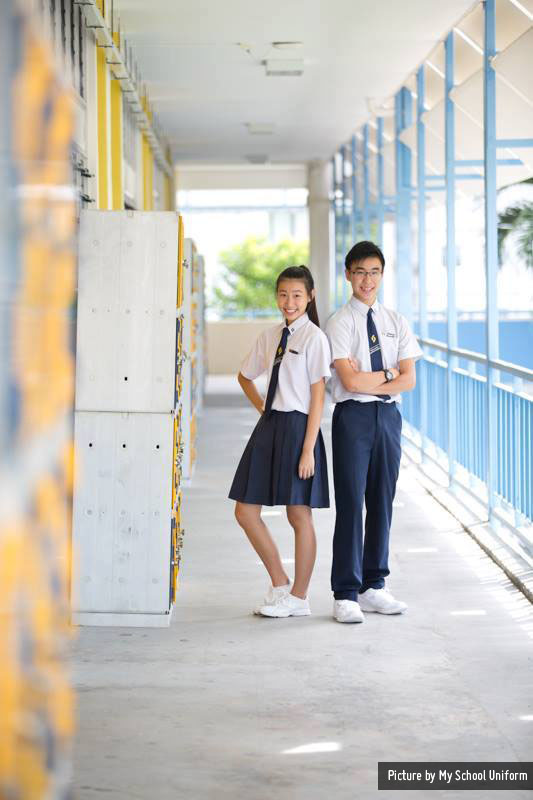
Balestier Hill Secondary will merge with Beatty Secondary in 2017. The merged school will be operating from the site of Beatty Secondary.
Source: [1] [2] [3] [4] [5] [6] [7] [8]
Henderson Secondary School (Bukit Merah)
To merge into Bukit Merah Secondary School in 2017
When Henderson Secondary School opened in 1974 at the now-defunct Friendly Hill at Preston Road (Telok Blangah), there were only 600 Secondary One students and 24 teachers.
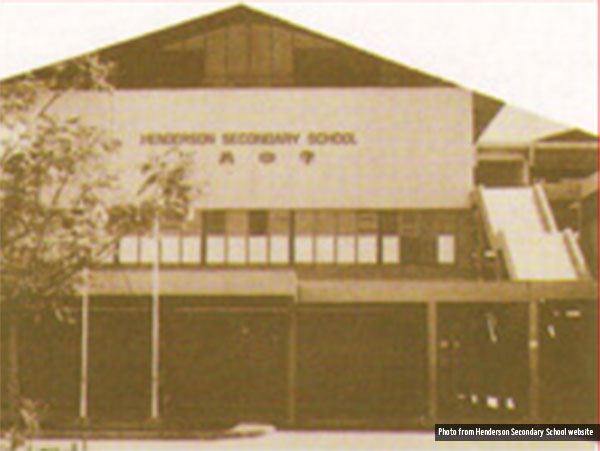
Old building

Old building
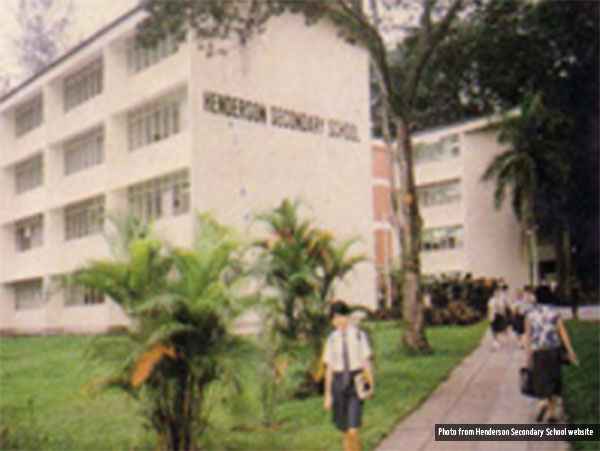
Old building

Old building
In 1976, it moved to its current address at 100 Henderson Road (the junction of Henderson Road and Jalan Bukit Merah) as the school population grew to 1600 with 60 teaching staff. The four-storey school is the 115th school built by the then-government at a cost of over two million dollars. It had 24 classrooms and four special rooms, a two-storey Science-cum-Home Economics block and a canteen with the school hall above it. There was also a three-storey technical workshop block that was built separately from the main building. The school subsequently underwent upgrading works between 1994 and 1997.

Now
Henderson Secondary was one of the few schools to have air rifle shooting ranges installed by the Ministry of Education. This was done to encourage marksmanship among students (more specifically, the National Cadet Corps members).

A part of the school
The girls originally wore loose white blouse adorned with a simple, connoted tie, held in place with a pin-on badge. It was paired with a navy blue, box-pleated skirt. The boys, on the other hand, wore white shirts and navy blue tie with an embroidered school crest. Eight years after adopting this attire, the girls’ blouses were modified to look similar to that worn by the boys, which remained unchanged across all levels until 1990 where the boys in the upper-secondary levels would wear navy blue long pants and a white shirt with ‘Henderson’ embroidered in white on top of the pocket. The school tie was also changed to the current design and only worn during assembly and other formal occasions. Further modifications were made to the uniform in 1998 as the embroidered ‘Henderson’ was changed to blue, hence the current school uniform.

Former uniform

Current uniform
The first school badge was diamond-shaped with the letters “EFL” in the middle which stood for the school motto ” Education for Life”. In 1981, the badge was redesigned into a shape of a shield by an art teacher of the school. Within the shield, there is a book signifying knowledge and a flame which Hendersonians strive to keep ablaze and an upright figure which represents ‘youth’ and ‘life’. The school song, penned by a music teacher in 1974, remains unchanged even until today.
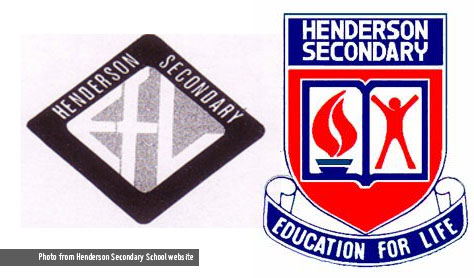
School logo – then and now
Henderson Secondary will merge with Bukit Merah Secondary School in 2017. The merged school will be operating from the site of Bukit Merah Secondary.
MacPherson Secondary School (MacPherson)
To merge into Broadrick Secondary School in 2017
MacPherson Secondary School was started in 1967 as an integrated government school where three-quarters of the student population was studying in the Chinese stream and the rest in English stream. Named after Colonel MacPherson (1st Colonel of the Straits Settlement which Singapore was a part of from 1826 to 1946). The first intake was made up of Secondary One students from the MacPherson estate (one of the earliest housing estates) and Secondary Two and Three students from Upper Serangoon Technical, Upper Aljunied Technical and Sang Nila Utama schools.

1960s

In 1981, the Technical Department formerly functioning independently under the name of Paya Lebar School was integrated into the school. Three years later, the school became a full English Language medium school with the graduation of the last cohort of Secondary 4 candidates from the Chinese stream.
The idea of having a new uniform was conceived in 1999. In 2001, students donned the new uniform to usher in the new millennium. In the same year, work at the new school site at 121 Circuit Road (beside the old campus) also started. It was to be ready for occupancy by 2003.

Current campus

MacPherson Secondary was joined by pupils from Woodsville Secondary School, which ceased operations in 2003, at their new school building. The newly merged school adopted the new vision “Dare to Dream, Innovate and Lead”. The different blocks of the school were named after philosophers (e.g. Aristotle), writers (e.g. Shakespeare), inventors (e.g. Newton) and pioneers of Singapore (e.g. Govindasamy) in the hope that MacPhersonians will be as successful as them in various fields.

2013

2015
Notabi alumni of the school include local actor Desmond Shen Jin Xing and actress Xiang Yun.
MacPherson Secondary will merge with Broadrick Secondary School in 2017. The merged school will be operating from the site of Broadrick Secondary.
North View Secondary School (Yishun)
To merge into Northland Secondary School in 2017
With all the news surrounding the death of Benjamin Lim recently, I believe the name North View Secondary School is already etched in everyone’s mind. Instead of basking in negativity, let’s all remember this soon-to-be-gone school for their achievements, shall we?

North View Secondary School was formed in 1988 at Yishun Avenue 11 (school address now considered as 530 Yishun Ring Road) with an enrolment of 483 pupils, 35 teaching staff and 12 non-teaching staff. The S$7.2 million school building, however, was not ready for occupancy until June that year. Hence, classes had to be held at two locations – the Secondary One pupils were housed in Yishun Secondary School while the Secondary Two to Five pupils were in the former Upper Thomson Secondary School building.
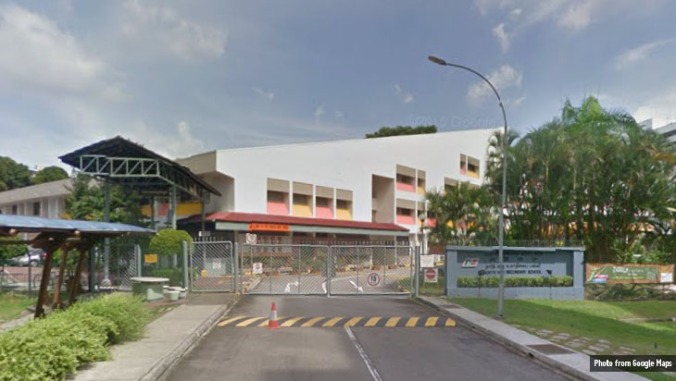
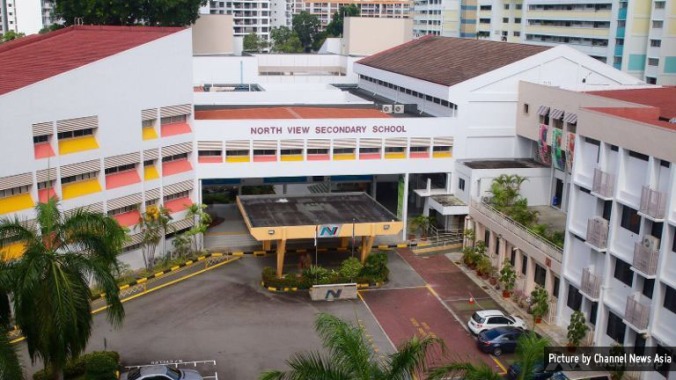

Among the facilities in the school were special rooms for music, arts and crafts and audio-visual aids, an indoor rifle range and outdoor courts for basketball, sepak takraw and volleyball. From early 1998 to June 1999, two new extension blocks were constructed – an admin and a classroom block. The admin-block houses the office, staff room, library, conference room, computer laboratories and three media resource rooms.

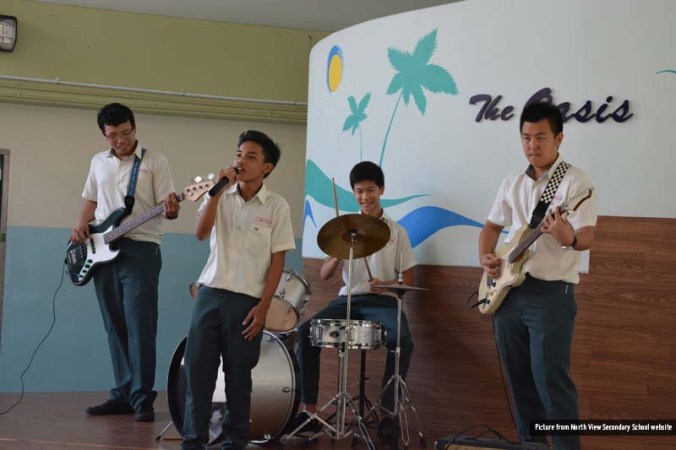
North View Secondary will merge with Northland Secondary School in 2017 after operating for only 28 years. The merged school will be taking over the site of Northland Secondary.
Pioneer Secondary School (Jurong West)
To merge into Boon Lay Secondary School in 2017
Pioneer Secondary School was set up in January 1994 with 12 Secondary One classes. While waiting for the school building to be ready at 21 Jurong West Street 81, it was temporarily housed at Hong Kah Secondary School under the management of a single principal.


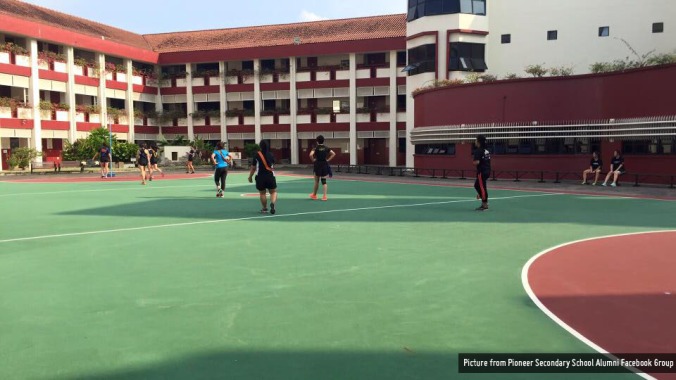
It had to open an extra Secondary Two class when it moved into its new building because of overwhelming response from residents nearby. This additional class brought to a total of 14 Secondary Two classes and 10 Secondary One classes in 1995. The school was spread over three hectares of land and surrounded by Housing Board flats. Its facilities included 36 classrooms, two computer laboratories and one theatrette. The S$17,000 195-cm-tall aluminium sculpture at the entrance of the school was donated by Kwan Yong Construction Pte Ltd (the builder of the school). Named Unity, it shows two profiles united as one, depicting the idea of co-operation between the school and the community.
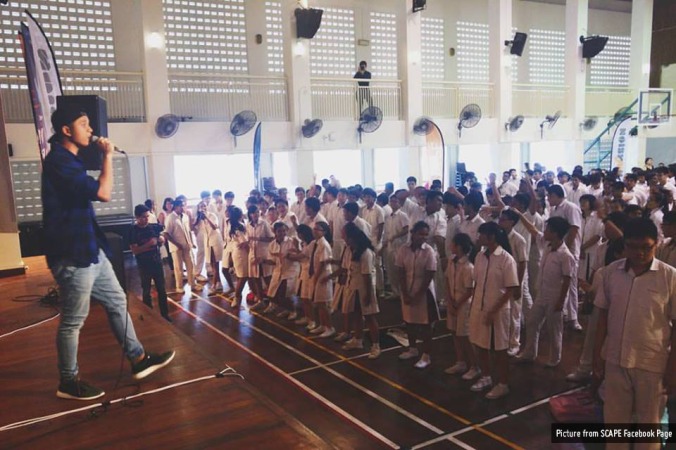
2016
The school was one of the five in Singapore in 2006 to adopt a cashless payment scheme that allowed students to buy canteen food with a Nets card. Designated Nets terminals around the school enabled students to transfer their weekly or monthly allowance from their parents’ bank accounts into what is being called “My Card” to reduce their frequency of cash transactions. To prevent misuse, a system that allowed to control the amount of money the students received was installed.
Pioneer Secondary will merge with Boon Lay Secondary School in 2017 after a mere 23 years in operation. The merged school will be located on the site of Boon Lay Secondary.
Siglap Secondary School (Pasir Ris)
To merge into Coral Secondary School in 2017
Opened in 1955, Siglap Secondary School was located at a two-storey building with 20 classrooms at Cheviot Hill, Siglap, now occupied by the Global Indian International School. The school was also widely recognised for their achievements in sports (more specifically for their outstanding performance in athletics, swimming, football, cricket and badminton), so much so that it had always been the venue for sports activities in the past. In 1973, they managed to raise funds for the building of their own bitumen track through a mammoth walkathon.


Former building

Science lab at the former building

Former building
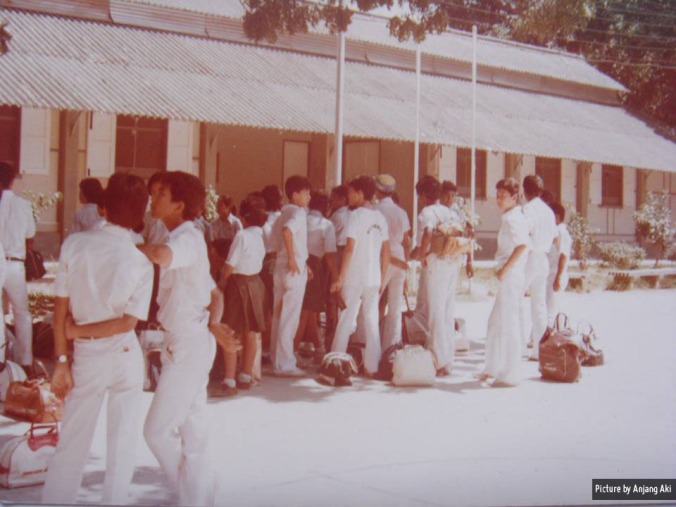
Former uniform
In 1998, Siglap Secondary shifted to its current campus at 10 Pasir Ris Drive 10. The relocation saw the steady growth in the school enrolment in the new estate from a mere 870 when it was still at Cheviot Hill. The number at its peak was so big that there were insufficient space in the school and some smaller classes had to be conducted in the canteen.

Current building

Current building
Upholding its reputation as an art powerhouse in the 1970s and 80s, the new Siglap Secondary was also the art centre for the east zone where students from almost 50 secondary schools including top schools like Dunman High and Anglican High could go to learn pottery, computer animation, sculpture and other art forms. It had also set up a multi-media lab, complete with 23 Macintosh computers that allowed students to experiment with three-dimensional designs.
Unfortunately, its enrolment in recent years shrank from a peak of 1,400 in 2003 to about 830 in 2013, leading to the closure of some of its uniformed groups such as Scouts and Red Cross (as they require a critical mass to carry on). Since 2013, the school has only been taking in about 200 Secondary One students each year, half the intake of more than a decade ago.

Current uniform
Notable alumni of the school include Singapore Idol champion Hady Mirza and Chee Swee Lee, Singapore’s first Asian Games gold medallist in the 400m race in 1974.
Source: [1] [2] [3] [4] [5] [6] [7]
Si Ling Secondary School (Marsiling)
To merge into Marsiling Secondary School in 2017
Established in 1980, Si Ling Secondary was the first secondary school in Woodlands to offer both English and Chinese as media of instruction. At one stage, it was renowned for its performance in Hockey. Beige blouse and brown bottom used to be the school attire. Now, students don light blue-and-teal uniform.
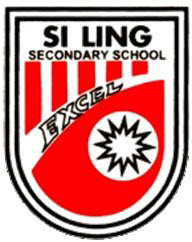

Former uniform
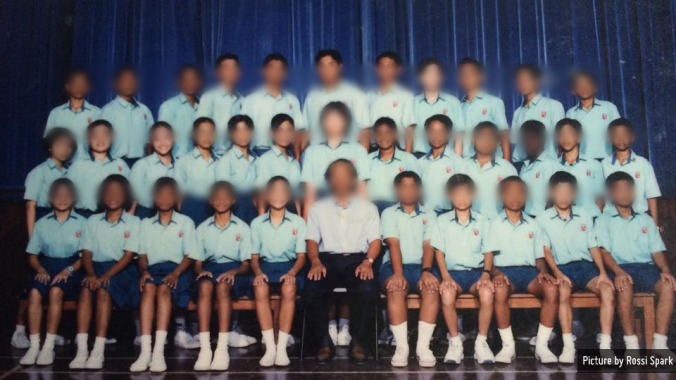
Current uniform
Once notorious for students who carried flick-knives, it was reported in 2006 that Si Ling Secondary was the only school in Singapore without a Secondary 1 Express stream class since 1999. Clearly, the school’s notoriety for gangsterism had put off some of its potential students, causing it to be the least preferred secondary school in the country. Even most of its own students, in fact, had not listed Si Ling as one of their six choices but were posted there due to poor PSLE results. Based on reports I read, its dark reputation seemed to date back to the early 1990s when students rejected by other schools, including those with discipline problems, were all taken in by the then-principal who, being a compassionate educator he was, firmly believed in giving delinquents a second chance. On top of that, students with the lowest PSLE scores, as low as double digits were accepted into the school.
As much as I would like to applaud the nobility of the principal, a school is, after all, an institution heavily dependent on good image and a reasonable student population to function. With such a lousy reputation for being a school for hooligans (and not forgetting how most of us are so face-conscious), who would want to study there? I know I won’t..
Determined to turn the school around, the principal who took over the helm of the school between 2000 and 2009 offered $500 scholarships to the top 10 students who made the cut for the Express stream, sent teachers to neighbouring primary schools to promote the school, held cheerleading performances and got students to give speeches to primary school students. These new initiatives, however, failed to evoke the desired response and the school remained largely comprised of Normal-stream students even today. There are Express classes for each level from Secondary Two onward mostly filled by students originally in the Normal (Academic) stream and had performed well.
In 2014, Si Ling Secondary was awarded the Lee Hsien Loong Award for Innovations in the Normal Course in recognition of the school’s effort in “providing a holistic education for their students in a caring and nurturing way”. Although the public does seem to have a better impression of the school now (even the website looks so atas), I guess it is still not enough to attract students to the school (I passed by the school just last year and man, it really needs a facelift).

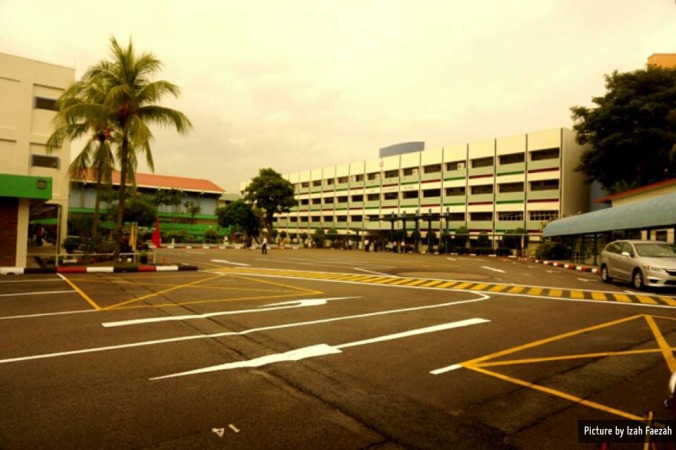
Si Ling Secondary will merge with Marsiling Secondary School in 2017 and will operate out of the latter’s site. The merged school will be officially named Marsiling Secondary School while adopting Si Ling’s Chinese name. It will take in around 320 Si Ling students in Secondary Three, Four and Five.
Bedok North Secondary School (Aljunied)
To merge into Damai Secondary School in 2018
Started in 1981, Bedok North Secondary was housed in the premises of Temasek Secondary School as its own campus at Bedok North Avenue 3 would only be ready in the following year. The school, built at the cost of $6.2 million, had facilities including a library, an audio visual aid room, a two-storey workshop and technical workshops. It was also the only secondary school in the then-Eunos constituency.
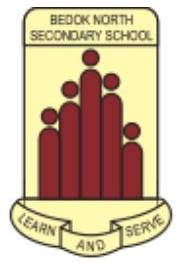

Officially opening in 1983

circa 1981-1986
Responding to the school’s obesity rate of 18% (4% more than national average) in 1994, about $5000 was spent on renovations and equipment such as cycling machines, treadmills and step-up machines to turn a room in the school into a mini-gymnasium in hope to attract more obese students to exercise.

circa 1981-1986
With only 29 classrooms and limited vacant rooms for extra activities at the old building, classes had to be conducted in two sessions and everyone still had to rush for space. As a result, the school moved to more spacious premises at its current site at Jalan Damai in 2000, also to meet growing demands for a secondary school in the Bedok Reservoir area. The new building allowed for the school to go single-session and hold more after-school activities. An underground rifle range that doubled as a bunker, a music and dance studio, and four high-tech computer labs were amongst the many facilities that students could enjoy at the new building.

In the mid-1980s, Bedok North Secondary emerged as zone champions and national runner-ups in foottball championships numerous times. It is also recognised for their outstanding performance in Sepak Takra for which they had also clinched the championship title in 2006 and 2015.
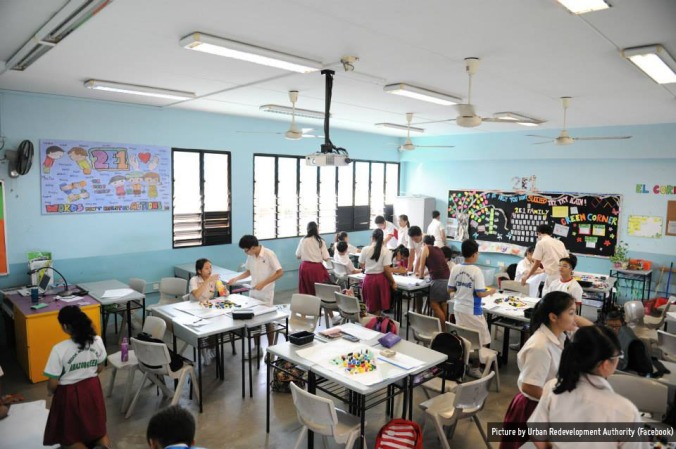
Bedok North Secondary will merge with Damai Secondary School in 2018 and will operate out of the latter’s site as it offers a better teaching and learning environment. Once upgrading work is completed at Damai Secondary by 2018, it would also be equipped with new facilities such as an Indoor Sports Hall and synthetic field.
Source: [1] [2] [3] [4] [5] [6] [7] [8]
Bishan Park Secondary School (Bishan)
To merge into Peirce Secondary School in 2018
Built at a cost of $17.3 million, Bishan Park Secondary was founded in 1993 at 2 Sin Min Walk. It had a career resource centre equipped with 12 computers, two huge television sets and a library of CD-ROMs on polytechnic education, job-interviewing skills and assessment tests that match personalities to jobs. This centre was shared with 40 other secondary school nearby.

Students from Peirce Secondary School attended lessons at Bishan Park Secondary School for a year (1994-1995) while waiting for their new school to be completed near Sin Min Walk.
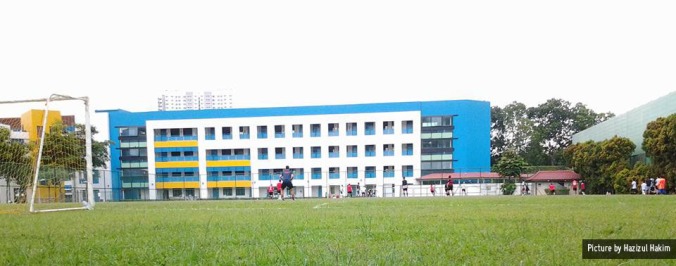

In a bid to help autistic children from Pathlight School integrate into society, the special education school partnered with Bishan Park and Chong Boon Secondary schools by letting their autistic secondary school students join their mainstream peers for selected subjects taught by mainstream teachers while a Pathlight teacher tags along to these classes to give extra help.

Bishan Park Secondary will merge with Peirce Secondary School in 2018 and will operate out of the latter’s site.
Chong Boon Secondary School (Ang Mo Kio)
To merge into Yio Chu Kang Secondary School in 2018
Chong Boon Secondary School started functioning in 1994 at the former site of Anderson Secondary School at Ang Mo Kio Street 44. It was a morning session school with 13 classes of 483 Secondary One students and 23 staff members. The following year, its enrolment increased to 772 students and the staff strength increased to 35.

The school became a double session school with 29 classes and 1022 students in 1996. To cope with the growing school population, new facilities such as computer laboratories were added to the premise. The old Chong Boon Secondary School was subsequently tore down in 2001 and the school moved to its new premise at 2 Ang Mo Kio Street 44 in 2002.
The school is home to a number of niche CCAs including A Capella Club and Cheerobics which clinched a gold medal in 2005. Chong Boon Secondary was the first school to be awarded the Niche Award in Environmental Education in 2009 for their exemplary green efforts. In 2010, the school also took in the Youth Olympic Games Torch Relay.
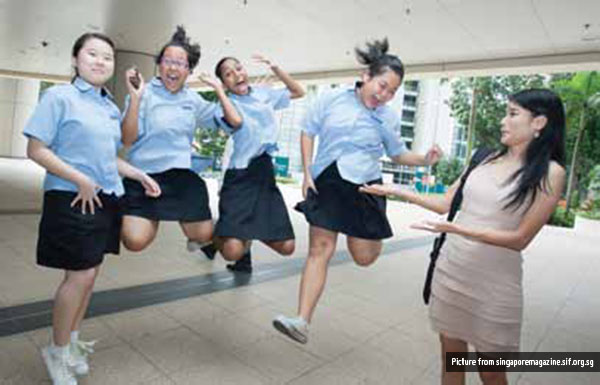
In June 2002, Chong Boon Secondary used fingerprint identification to monitor habitually late students. The 60 students who were identified as always coming in late, which in the case of the school, is after 7.15am, had to record their time of arrival when they came to school in the morning.
Chong Boon Secondary will merge with Yio Chu Kang Secondary School in 2018 and the merged school will be located at the latter’s site.
Greenview Secondary School (Pasir Ris)
To merge into Loyang Secondary School in 2018
Completed at the cost of about $14 million at 15 Pasir Ris Street 21, Greenview Secondary started in 1994 with 17 Secondary One classes and 681 students. It had 36 classrooms, more laboratories, and computer, commerce, language, CCA rooms than other schools and had a career guidance and a counselling room. The building also featured an amphitheater in the atrium to provide a place for student-staff interaction.

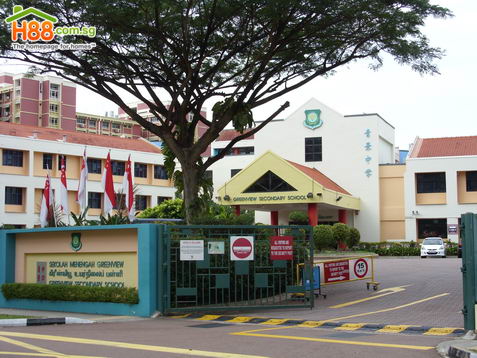
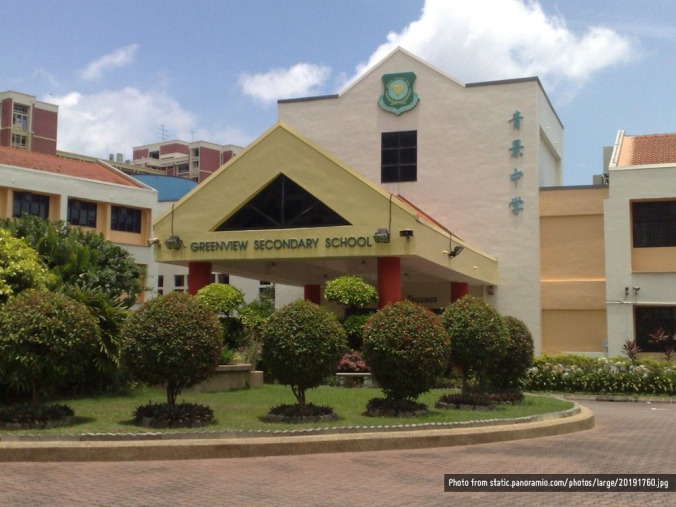

In a bid to equip students with the knowledge of connecting computers to the web of networks across the globe during the internet boom, Greenview Secondary set up a “networking academy” using course material from the American-based network manufacturer Cisco Systems in 1999. It was the the second educational institution in Singapore to teach networking after Temasek Polytechnic. 26 Secondary Two students with a minimum grade of B3 in Mathematics as well as eight other students from four nearby schools – East View, St Hilda’s, Springfield and Dunman Secondary schools – were selected for this two-year course. The students spent two hours every Saturday afternoon in Greenview Secondary’s capacious Rainforest Computer Lab where 43 computers arranged in clusters were surrounded by murals of trees and animals of rainforests.
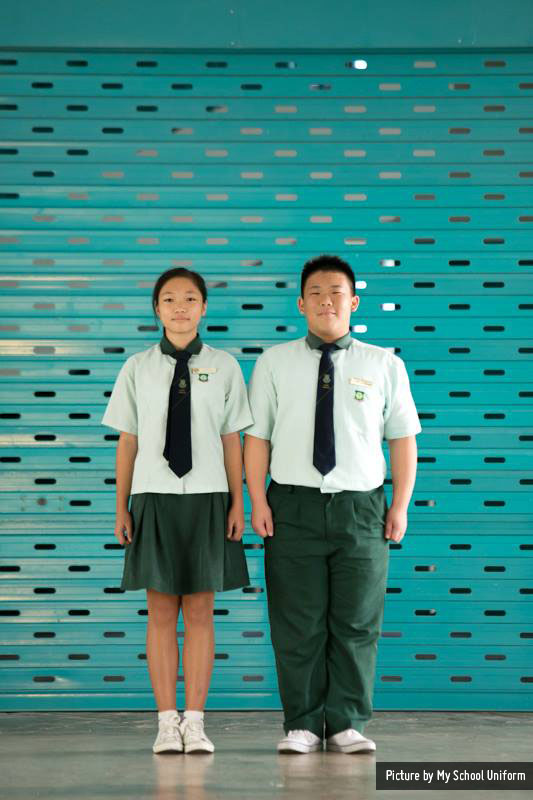
Greenview Secondary will merge with Loyang Secondary School in 2018 and the merged school will be located at the latter’s site.
* * *
*phew* It’s really not easy compiling information on tens of schools in a small space like this, but I’m glad I’ve managed to do it! You might have noticed some beautifully-taken pictures from “My School Uniform“. If you don’t already know, My School Uniform is the first-ever photography project that documents all the secondary school uniforms in Singapore. If you’d like to find out more about the book (which is already out in major bookstores), you can read my review here.
Once again, thanks for the read and hope you enjoyed this instalment of my Closed and Merged Schools series!
Have a story to share about your decommissioned school? Let me know in the comments below so that I can include them in my next write-up! To report errors, please leave a comment below as well. If you have pictures that are not featured in this post (preferably of the school building, uniform, or anything that best represents the school), please share them with me via e-mail at askme@fionaseah.com.
Much appreciated!
Main source:
National Archives of Singapore
NewspaperSG (National Library Board)
Factiva (for news articles after 1990)
Chinese Schools Exhibition
My School Uniform
Facebook Pages of Schools
(In case some of these links become inaccessible, you may retrieve them through Archives.org)
Read also:
HISTORY: Closed and Merged Schools in Singapore (PART 1)
HISTORY: Closed and Merged Schools in Singapore (PART 2)
HISTORY: Closed and Merged Schools in Singapore (PART 3)

Hi Fiona,
I studied in Dorset school back in 78. It is a mixed school. I was there from 78 through 80. In 81, Dorset school got took over by CHS primary. I was transferred to CHS primary. In the following years, the school premises houses the K1’s class, P1 to P3 classes from CHS primary. It remained so until the government demolished the school compound to make way for the new IRAS building. This happened after 1988. Back then, Dorset had a very big track and field piece of land. I remembered running in it as a kid and often had to struggle to stay balanced due to the numerous hidden pot holes in it. The school canteen photo depicted in your post is correct. We merely had two eating stores back then. The right side store sells curry puffs and kuehs for 10c. Drinks was 10c The roof were apex in shape and the canteen was the place to get our “free milk education”.. Either way, it was a great time.
LikeLike
Thank you so much Lawrence! I’ll include the additional information on Dorset School soon with pictures I retrieved from Dorset Sch FB page, courtesy of the page admin 🙂
LikeLike
There is a facebook page for those who studied Upper Aljunied Technical
https://www.facebook.com/groups/52183032512/
LikeLike
I was the last batch of O level taking students in the school. That was 1996. The other students were transferred to Upper Serangoon Secondary
LikeLike
Hi Fiona: Very impressed and appreciative of your wonderful work here. I attended Opera Estate Girls School (now Opera Estate Primary) and read above that you could only find the photo of the two young girls for your work here. I still have my class photo taken in 1963 and would be glad to scan and send it on to you. Just let me know.
LikeLike
Hello Sheela! That would be great! Could you send the picture to me at askme@fionaseah.com? Million thanks for your contribution!
LikeLike
Thanks Fiona for compiling this information. I didn’t even know my Primary school, Beatty has been closed since 1995! Good job. Keep it up!
LikeLike
Great job. Tanglin Girls’ Primary School pinafore used to be grey and white vertical strips (note some girls were wearing the old pinafore in the photo) before the blue pinafore. I thot its an interesting fact.
LikeLike
Hi Fiona, I studied in Geylang Primary school before was Geylang English primary school. I have viewed from part 1 to 4 not any of my school is in the list
LikeLike
Glad to be of help 😉
LikeLike
Thanks for the additional info! 🙂
LikeLike
Hey Yanty! In view of the upcoming mergers of 8 govt JCs, I will be doing a part 5 to document their history, as well as to include closed schs that were not mentioned in the first 4 parts. I’ll check out Geylang Pri and add it to my list if it is indeed closed 🙂 Thank you!
LikeLike
Does Kim Keat primary school used to house Kim Keat Vocational Institute ? according to the address i check 90 Jalan rajah used to housed Kim Keat Vocational Institute
LikeLike
Hi Fiona, I studied in Sembawang School (1972-1977) which was located in Jalan Mata Ayer, Sembawang. I did not see the school in your list. Appreciate it if you could share any info that you may have on the school. Many thanks.
LikeLike
Hi do you have any info about Hwa kwang school on sembawang.
LikeLike
have not seen Margaret Drive Primary school?
LikeLike
Margaret Drive Pri is in part 2 🙂
https://fionaseah.com/2014/08/06/history-closed-and-merged-schools-in-singapore-part-2/
LikeLike
No, not yet but soon! I’m adding this to Part 5 🙂 Thank you!
LikeLike
Hi Fiona,
Thank you for the rich sharing on school history. I read the history of Chong Boon Sec on your post and hope to verify the part about the location of the school. I found on Anderson Sec’s website that the school moved from Stevens Road to Ang Mo Kio Street 44 in 1984. After Anderson moved out of the premise in Dec 1993, Chong Boon Sec was started in 1994 and operated at the premise, Chong Boon Sec has since operated from the same site. For your verification, please.
Reference: http://andersonsec.moe.edu.sg/school-information/history
LikeLike
Hi Kevin! You’re right, they’re at AMK St 44. Will change the address on the post. Thank you!
LikeLike
Hi Fiona, siglap and coral was form into meridian secondary school now, this year the MOE had announced the pri, sec and JC
LikeLike
Hey Daniel! Thanks! I’m aware of that too! In fact, part 5 will be posted soon and that will include all the schools that are closing/merging next year/2019 🙂
LikeLike
Hi Fiona, really felt thankful to see this blog. Is considered very comprehensive. I studied at Henderson pri, Buona vista sec and Townsville institute. Should you need any info or pics, do let me know. FYI, We also have a closed group FB for Buona Vista sec.
LikeLike
Hi Ying Ying! Thanks so much for dropping by to leave a comment 🙂 If you’d like to contribute any pics or facts, feel free to email me at askme@fionaseah.com thank you!
LikeLike
Feeling excited to when will Part 5 of Closed and Merged schools in Singapore be accessible for viewing? Until today still not yet published. Looking forward to Part 5!
LikeLike
Dear Fiona,
I was looking for articles about West Hill Primary School in Sembawang, and I came across your excellent web-site !
Do you have any articles about Canberra Primary School and Naval Base Secondary School, which also existed along Ban Tan Road ?
Many Thanks & Kind Regards
Norman
LikeLike
Hi Norman! Canberra Pri and Naval Base Sec are still around today and therefore won’t be included in this post 🙂 Hope that helps.
LikeLike
Hey!, The Old Chong Boon Secondary School Building is now renovated to acoomodate Pathlight School and Eden School, go see for yourself!
LikeLike
Hi Eden, thank you! 🙂
LikeLike
Hi Fiona – I was a teacher at Jalan Lama Sec School in the 1960s. I believe it was closed in the 1980s. If you google the name of the School, you will note some information. I have some old photos of the School – if you like, I can forward it to you.
Thanks from Koh Boon Long (former MOE DDNE and retired Principal (Christ Church Sec-still extant and Bedok Town Sec – merged)
LikeLike
Thank you, Fiona for the write up , At last, I get to see the picture of the tuck shop of Dorset School, that I last visited in 1971.
LikeLike
My pleasure, Muthu! 🙂
LikeLike
Hi Fiona, will u include Clementi School at 352 Pasir Panjang but now have become DarulIhsan halfway house in ur part 5.
LikeLike
Hi Liya, is the name of the school Clementi School? Thanks!
LikeLike
Very nice presentation… Love it. By anyway you have anything about Kaki Bukit Secondary School
LikeLike
Dear Fiona
I am putting up an exhibition about old schools in Sembawang. West Hill school. Can you allow me to print out the picture of West Hill and Nee Soon School and put up for the exhibition please. It is just a small project done by a group of teachers to help people reminisce the past.
LikeLike
Fiona,
Do you have any info on Shut Yong School at Shan Road ?
Thanks
Edward
LikeLike
Phenomenal piece of work; mind blown. I relished seeing the Hua Yi building after all these years.
LikeLike
Thank you 🙂
LikeLike
Not that I know of! Do you have any? Please send them over to askme@fionaseah.com 🙂
LikeLike
Hi Gowri, I do not own the rights to any of the pictures. Please approach the respective owners (as credited) through the links after the writeup of the school for permission. Thank you!
LikeLike
Great piece of work.. congratulations. Hopefully you will also include Wessex Estate Malay School, Wessex Junior School and Pasir Panjang Junior School in the coming parts,
LikeLike
Hi Fiona,
I went to Alexander Intergraded Primary School in 1965 and a year after that to Bedok Girls Primary school. Any photos of those era around?
LikeLike
Amazing history, i happen to visit your site, the write up, photos, wow thanks for the memory.
have a good and healthy life.
LikeLike
I went to Wessex Junior School from 1967 – 1970.
I will be visiting Singapore in about a month’s time and would love to visit the school. Unfortunately, my parents have now passed away and so I do not have any address of where the school is.
Could you help?
LikeLike
Wessex was at 95, Portsdown Road, I’m not sure how much of the old school building is still there but I believe it is not going to be much. The buildings were occupied by Weyhill Preparatory School for some time before it totally transformed into the Tanglin Trust School which is there today.
You might want to visit the Tanglin Trust School historical page where you might find some photos of the old school building in the early 70’s.
LikeLike
My old primary school was discommisioned along time ago. Sembawang Primary School on Jalan Mata Ayer, next to Khatib Camp. It’s also another school that magically vanished as no mention anywhere when searched. What’s left is only the fond memories that I have of it and my time there. It would be great if you can cover the story in your next instalment.
LikeLike
Hi Fiona! Love this post. But I think as emerged the schools you have also missed out the other sch. Eg like greenview sec and loyang secondary. You only featured greenview. You might want to include loyang secondary too. Cos it changed as well. Cos i was a student there in the 90s I can add that national bowler Remy Ong was there too from my batch. I can provide some pictures later but here’s a link to loyang sec. https://m.facebook.com/profile.php?id=170127729679922 the motto of the school was – ‘Excel with excellent’ and my time was ‘graph paper uniform’ lol cos our top had graphpaper like design with small check boxes – many jokes then were that if we hv not enough of graph papers, we could use our uniform tops as spare.
LikeLike
Sorry was ‘to excel with dignity’ lolol too rusty in my head now
LikeLike
Hi Fengling! Greenview was mentioned because it has closed and been subsumed into Loyang Sec. Loyang Sec isn’t mentioned (and I reckon this to be a good thing 😝) because it is still in operation. Though, granted, there might have been changes to the school motto, crest etc after merger, at least it still retains its name 🙂 This series of closed and merged school posts only features schools that are no longer around. Hope this clarifies!
LikeLike
Thanks for these blogs documenting the merged and closed schools. Lots of useful and interesting infor. Great job Fiona!
LikeLike
Thank you, Ariel 🙂
LikeLike
Hi Fiona, I studied at Naval Base Section public chinese school in sewbawang area. I can’t find any info over the internet. Would you kindly check whether you have the info? Thank you rgs Andrew
LikeLike
Hi fiona! Thanks for this extensive list of defunct schools in singapore. The schools that i studies are still in existence but i always pass by Hong Kah Primary whenever i go to work in bukit batok estate for past 2-3 years. Its a pity that the Tengah and bukit batok new housing estates were only exsited after school closure and i last saw is that the building had undergo demolishment (think mid 2019 but was stopped halfway in 2020 cos of COVID-19) but no idea what will be used for. Hope this helps!
LikeLike
Hi Fiona, nice blog. Can learn a lot of things from this blog. But better to update it further with more mergers.
LikeLike
There was a Winsted School. My friend went to it in the 1960s. It shared the same field as Notify Hill School which was a much larger school. I think it closed down in the mid 1970s.
LikeLike
HI, have you got any info on 瓯江公校, it should establish between 1930s, closed 1970s
LikeLike
Dear Fiona,
I think I wrote to you sometime back about my primary school – Pearl Bank School.
Can somebody enlighten me, please? Were there more than two Sepoy Lines schools in that area or what? O_O Why do I see ex-students of Park Road School addressing Sepoy Line Malay School on Facebook like it’s another school? How mysterious.
I will attempt to answer your question above.
School History Extract From MOE Heritage Centre:
Founded on 11 January 1954 with an enrolment of 400 students, Pearl Bank School was formerly known as Sepoy Lines School I. The school was renamed when it moved to Pearl’s Hill on 15 June 1954.
The school merged with Park Road School (Sepoy Lines School II) in 1985 to form Pearl Park Primary School.
In 1995, Pearl Park Primary School merged with Pearl’s Hill School, retaining the name of the latter. In 2001, Pearl’s Hill School closed.
There was a Malay School opposite my school – Sepoy Lines Malay School. There were no tables, chairs, windows or doors in this school. It was essentially an “open” concept school.
Now you understand Pearl Bank School was Sepoy Lines School l and Park Road School was Sepoy Lines School ll. Plus the Sepoy Lines Malay School, so there were 3 schools with same name.
I will try to find out where Sepoy Line School l and ll were before being relocated to Park Road.
I hope you will update this information in your website and keep up with the good work.
LikeLike